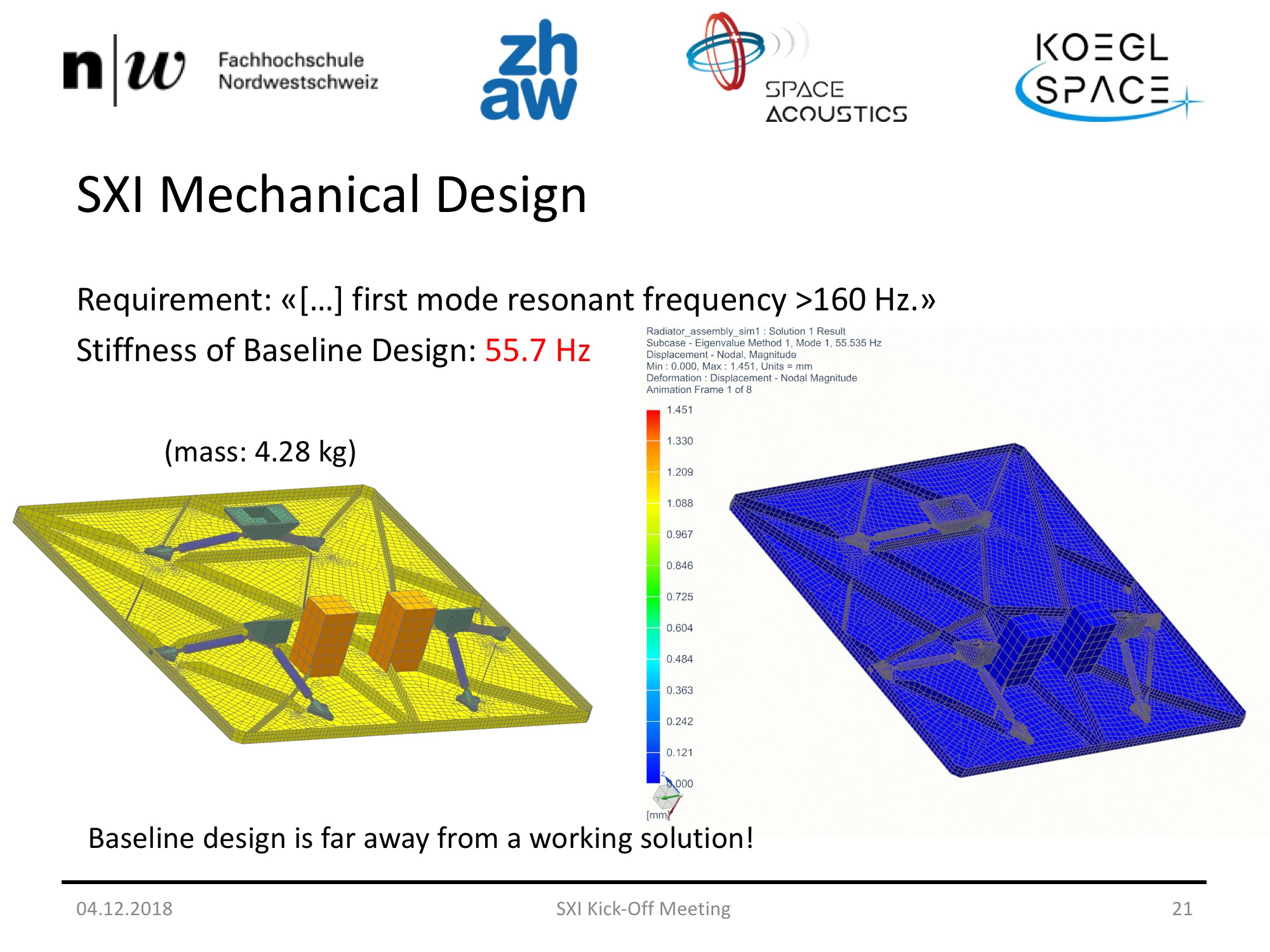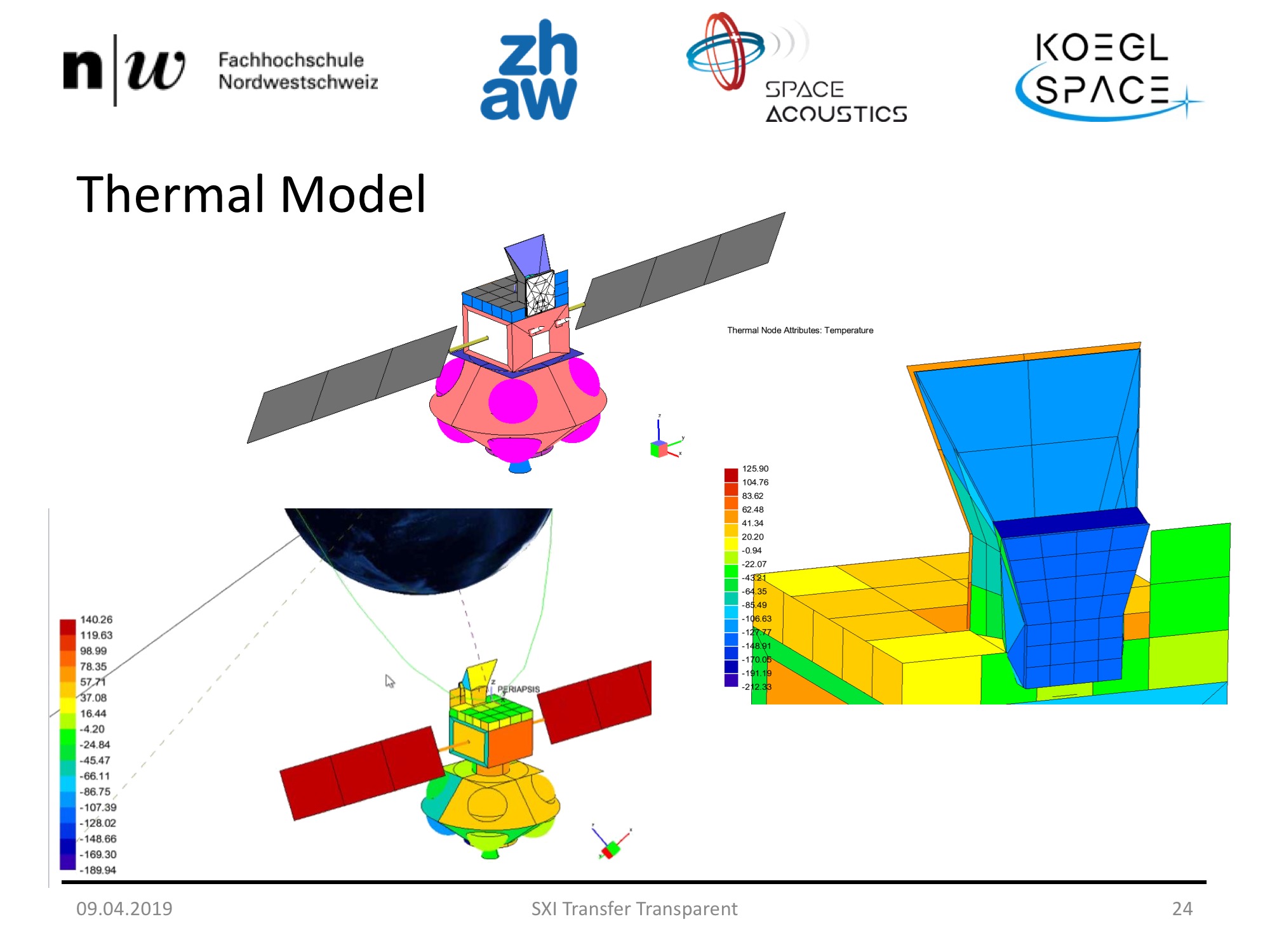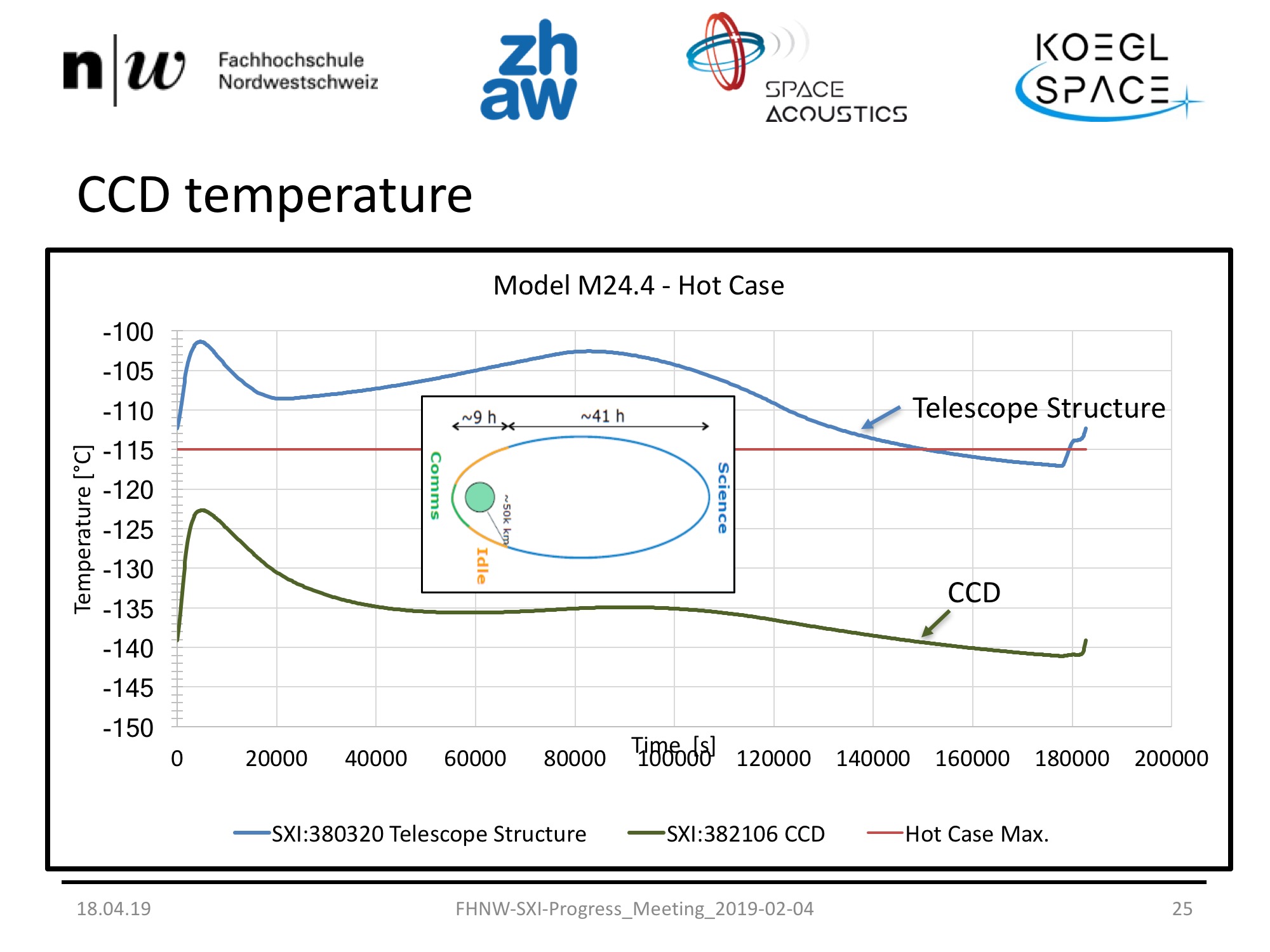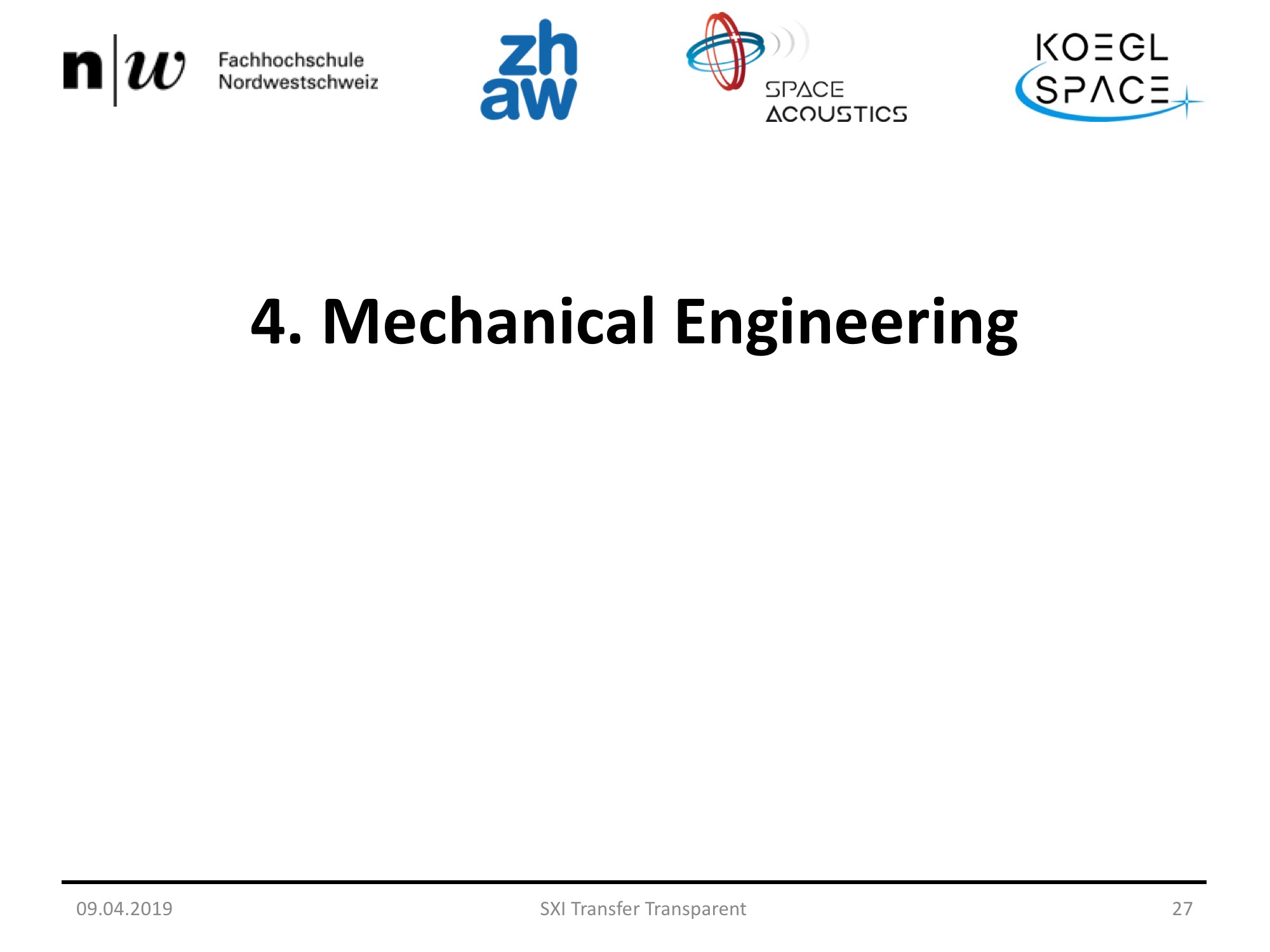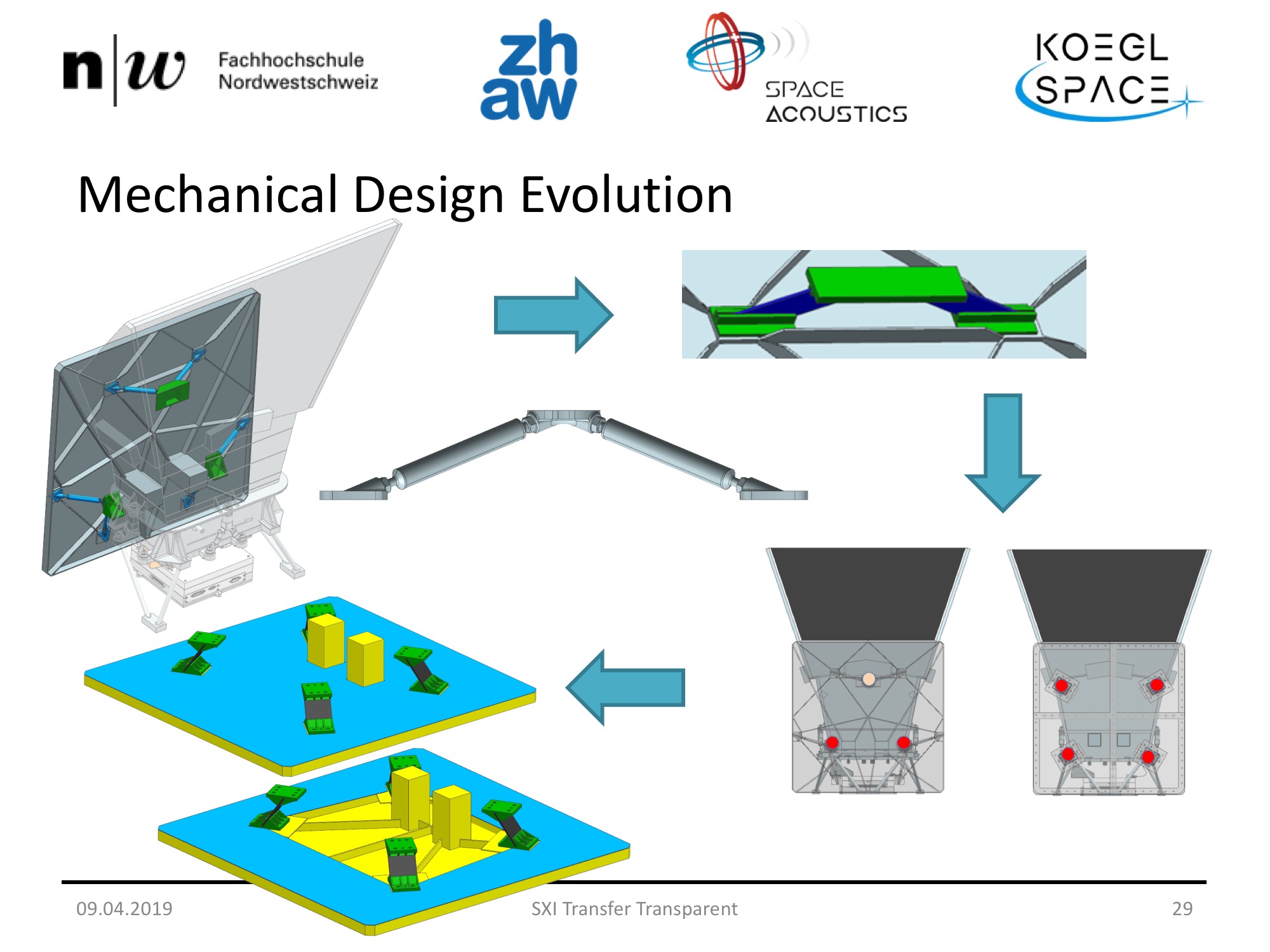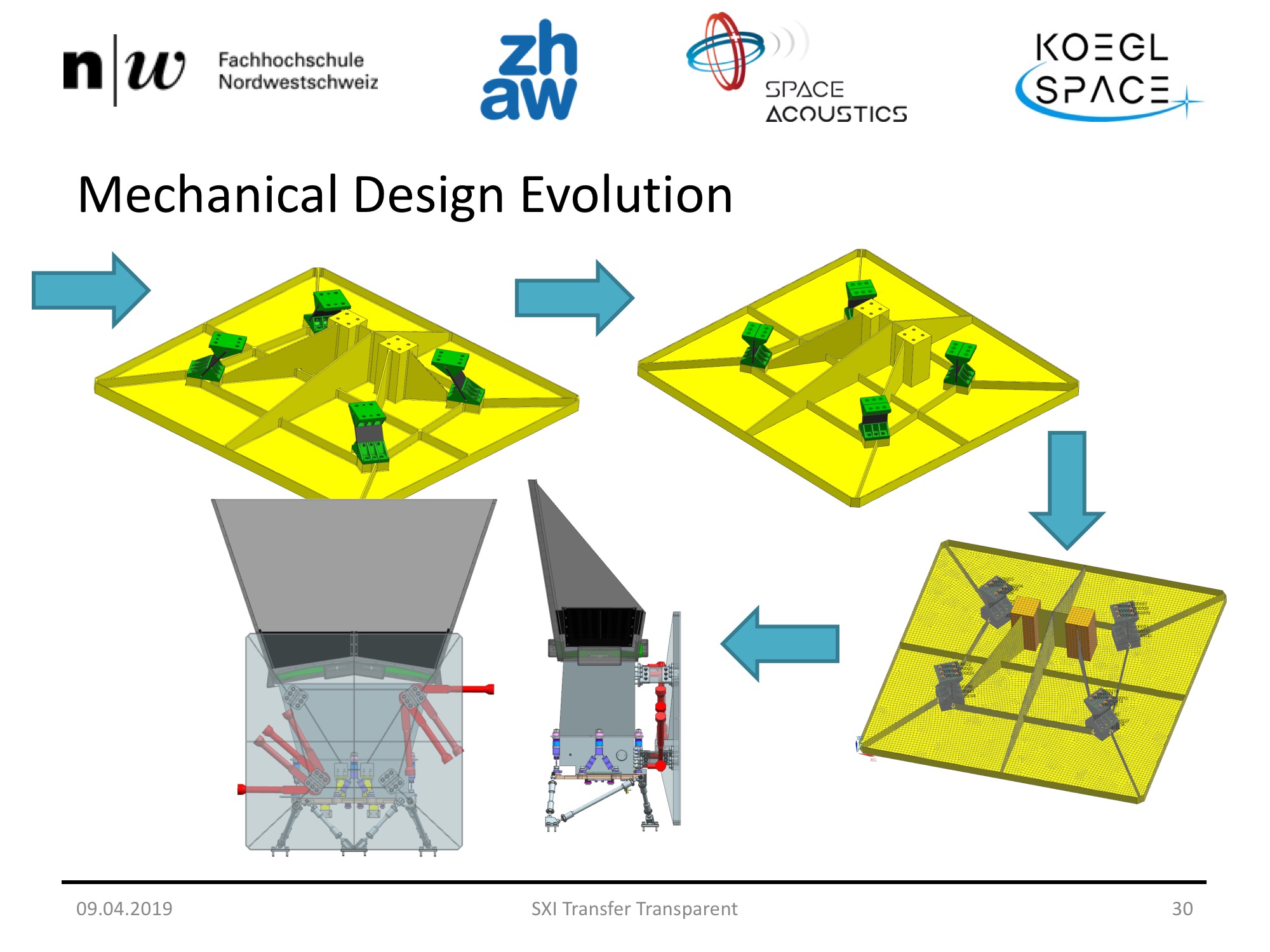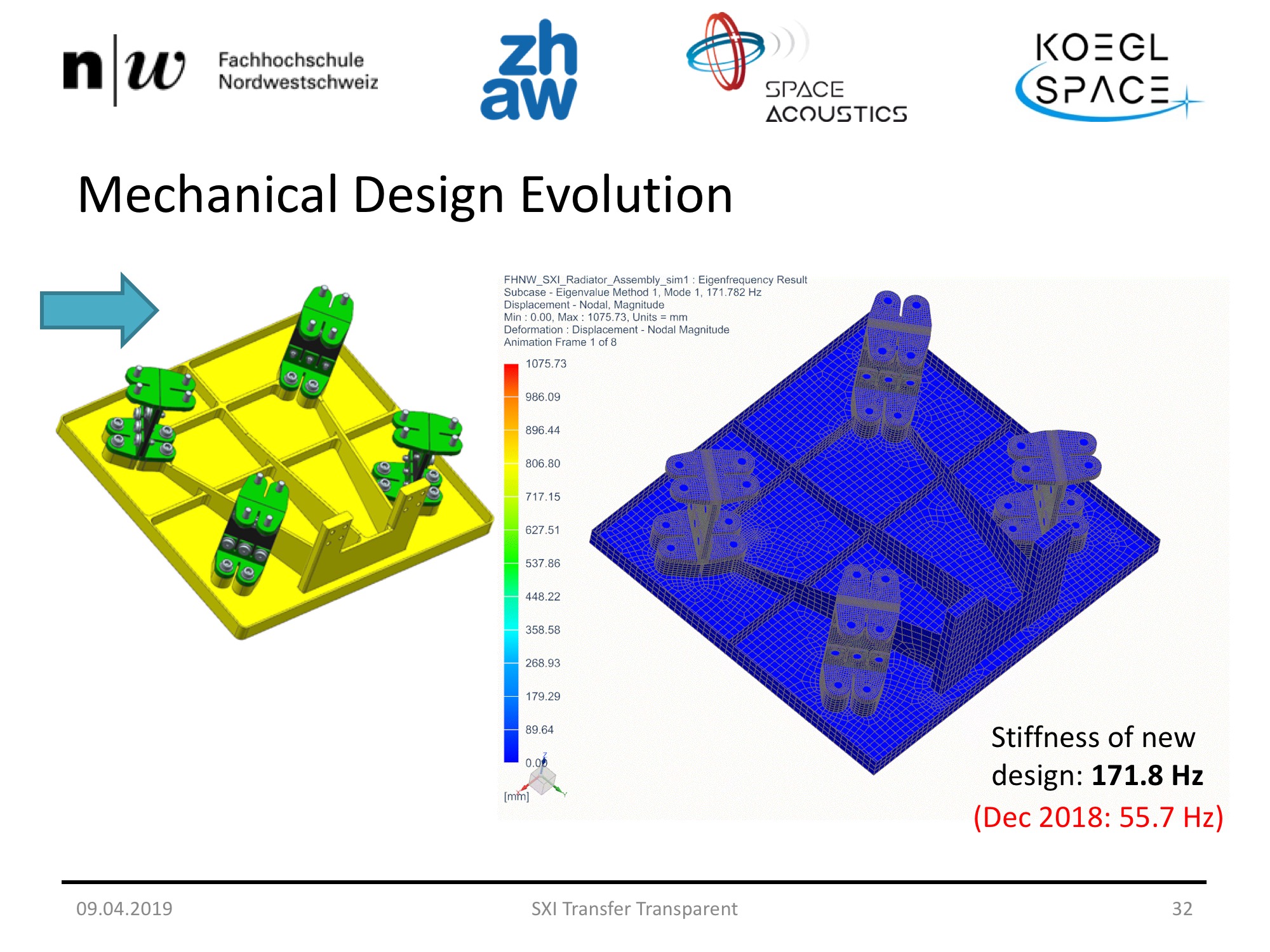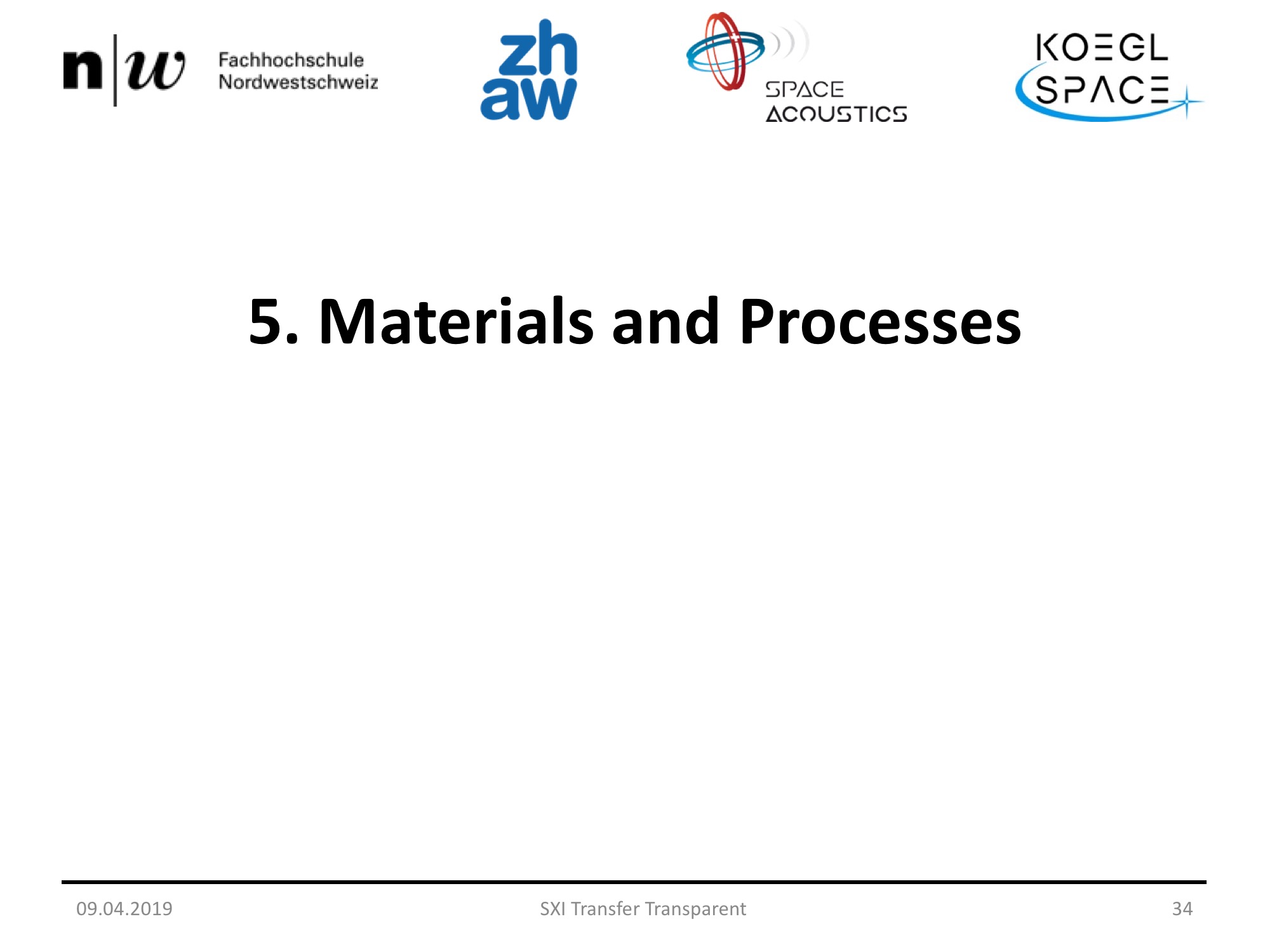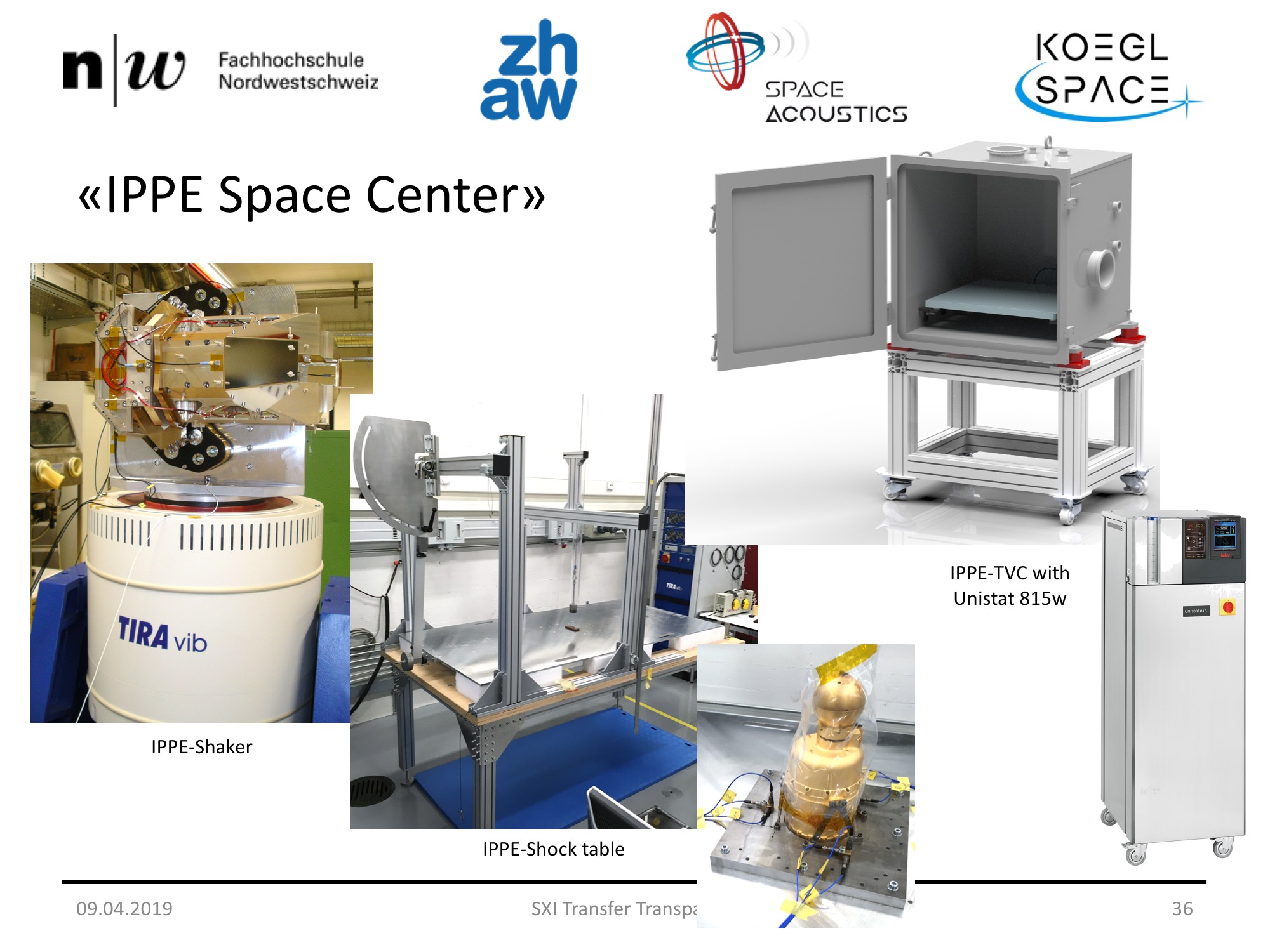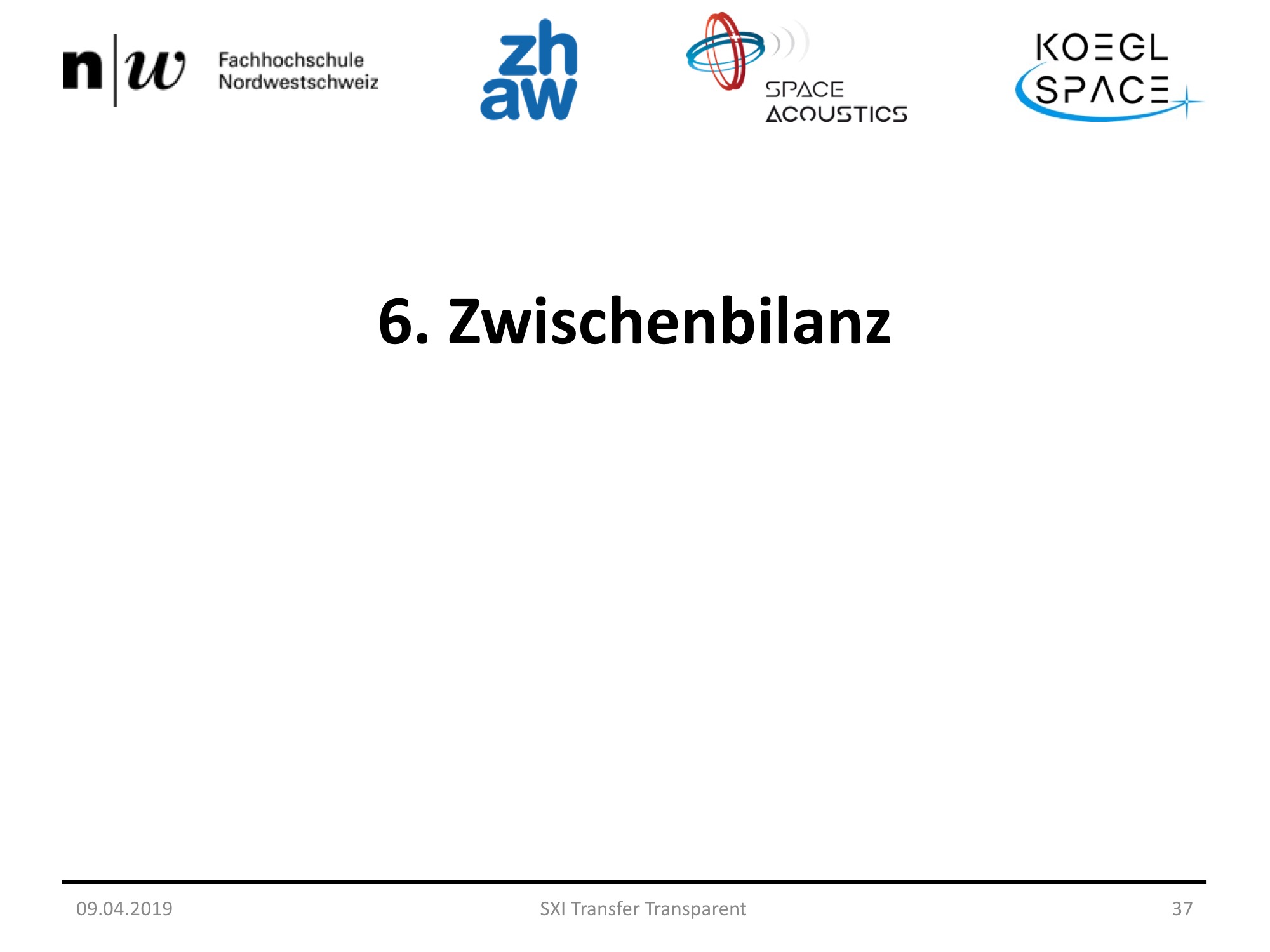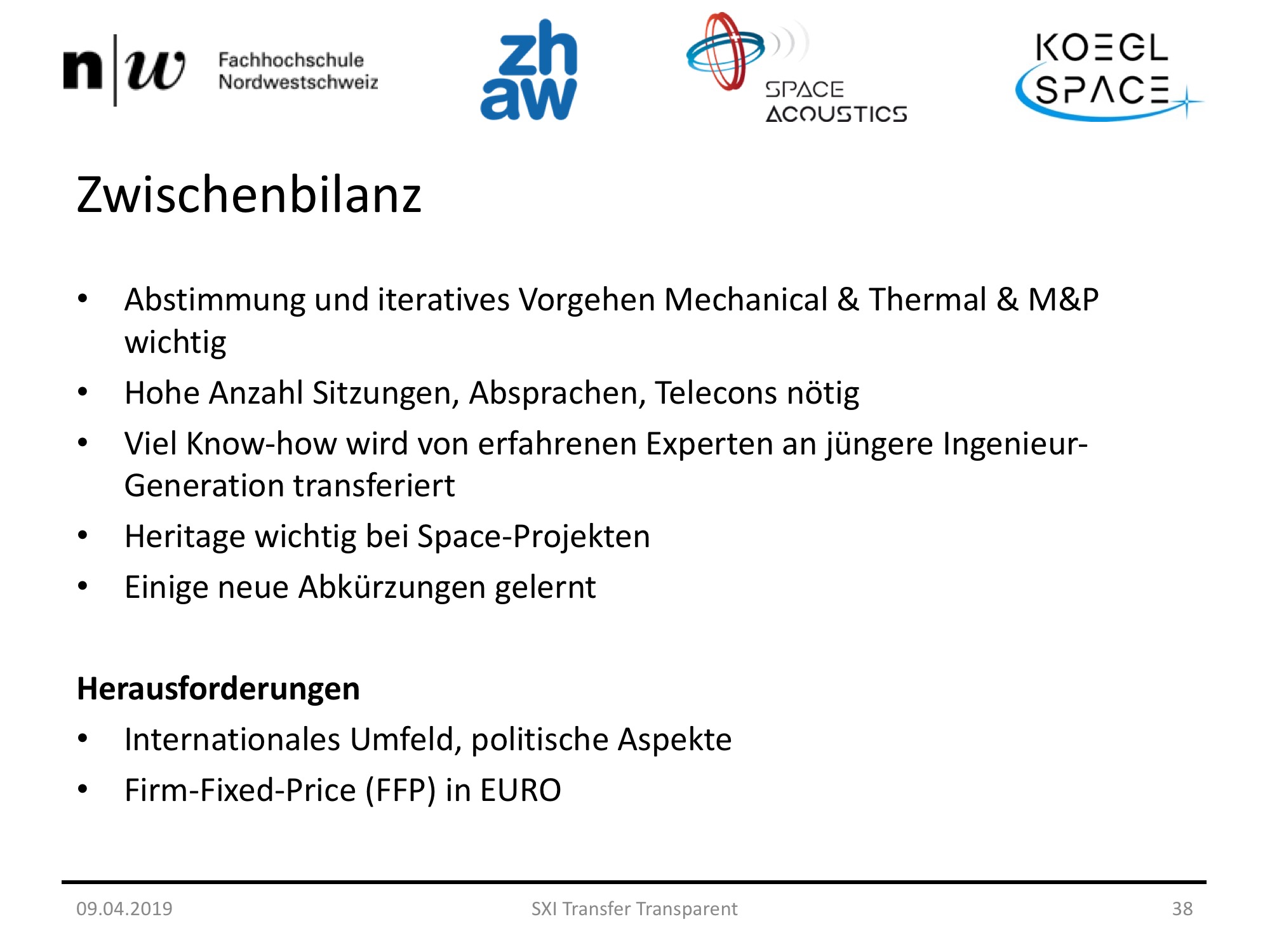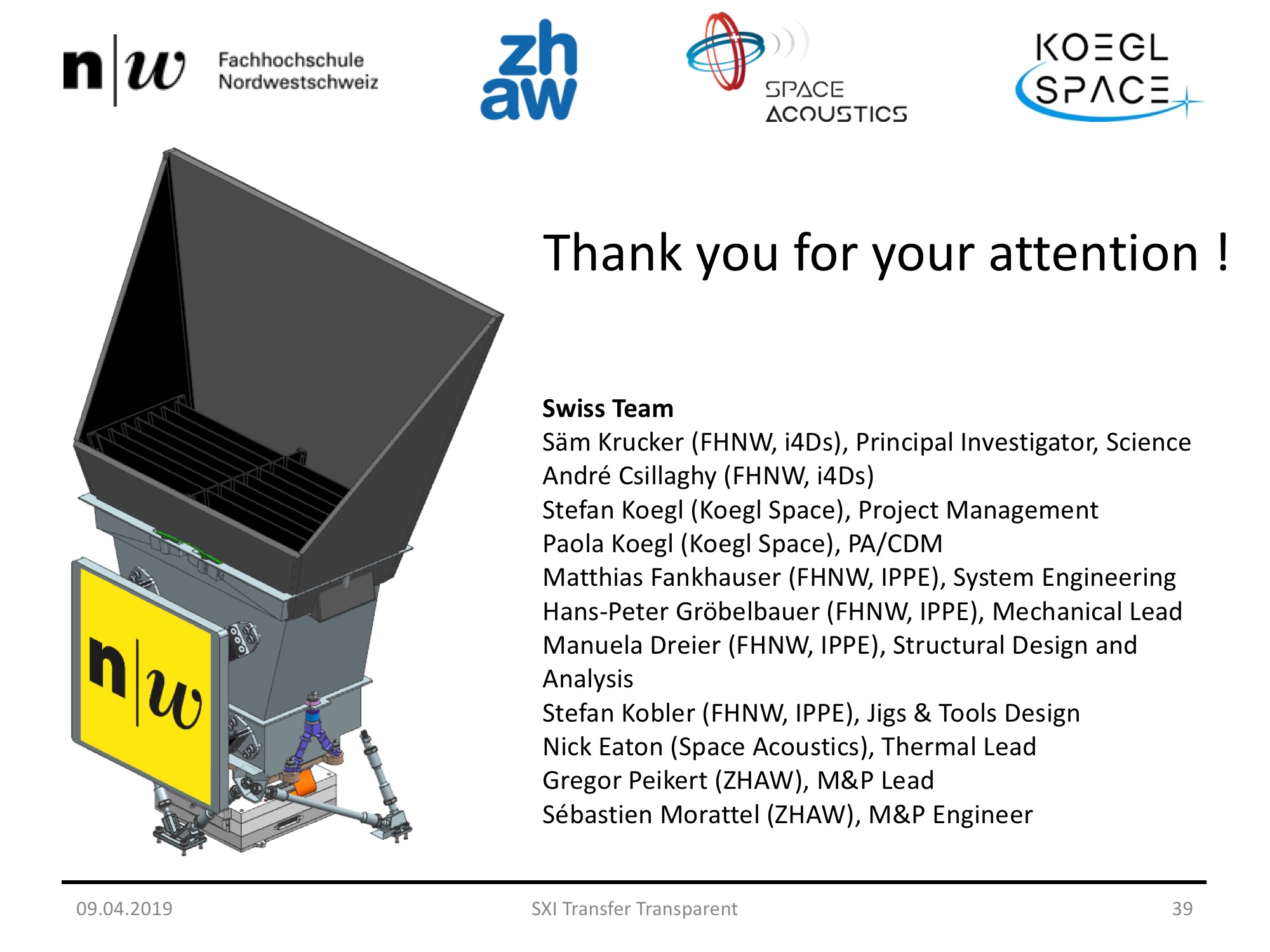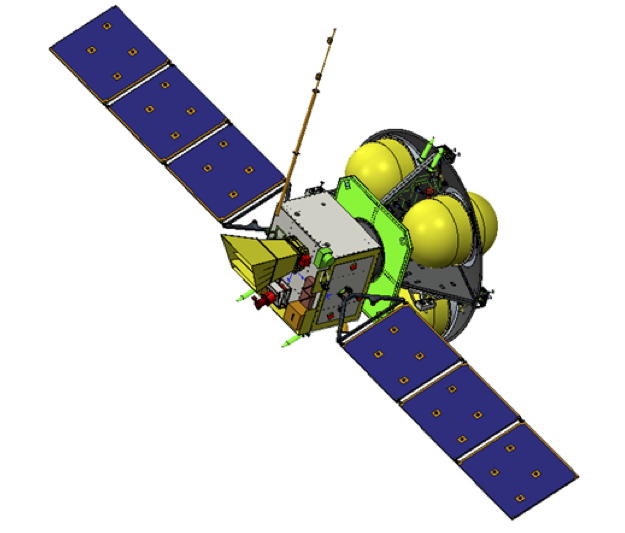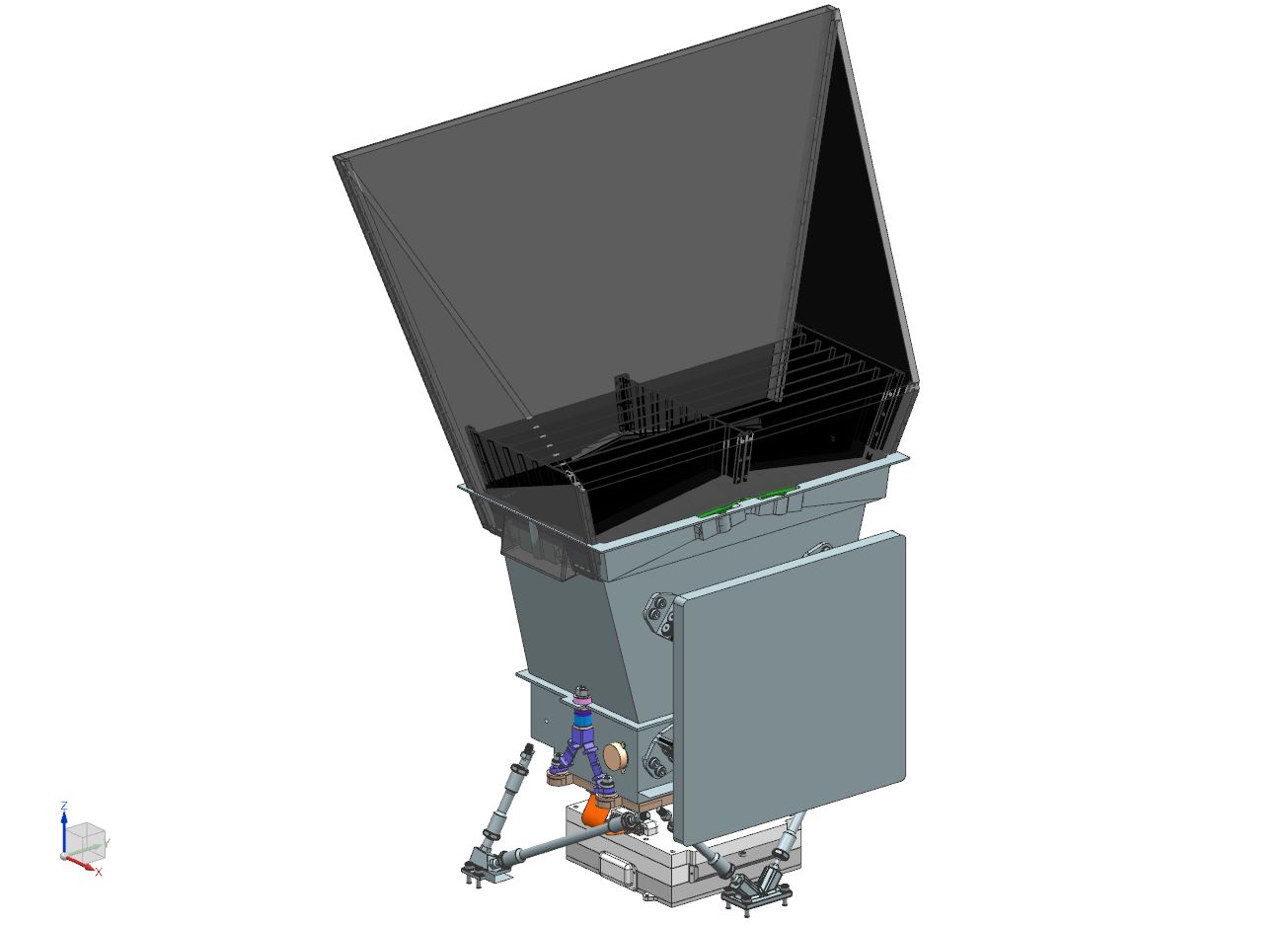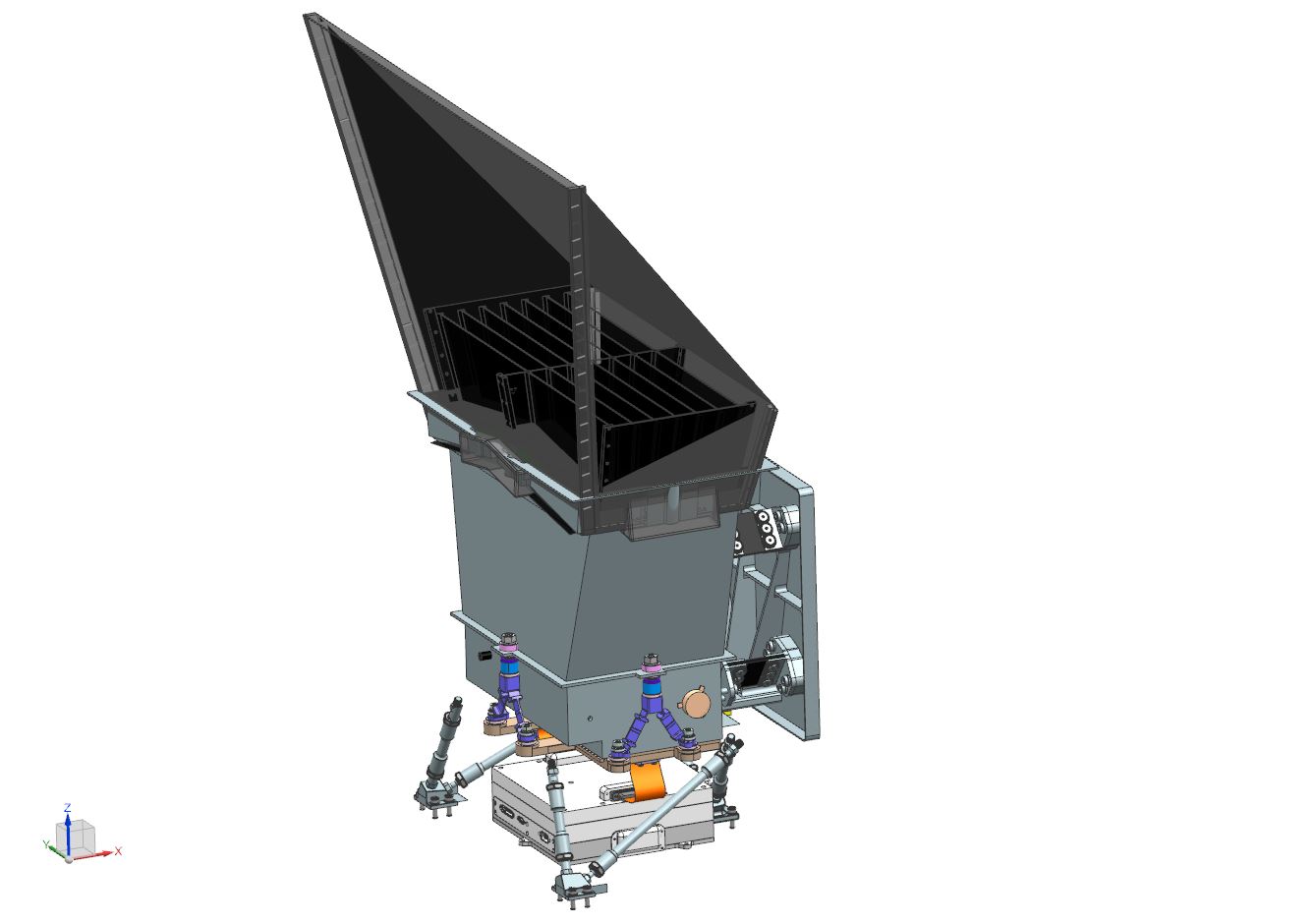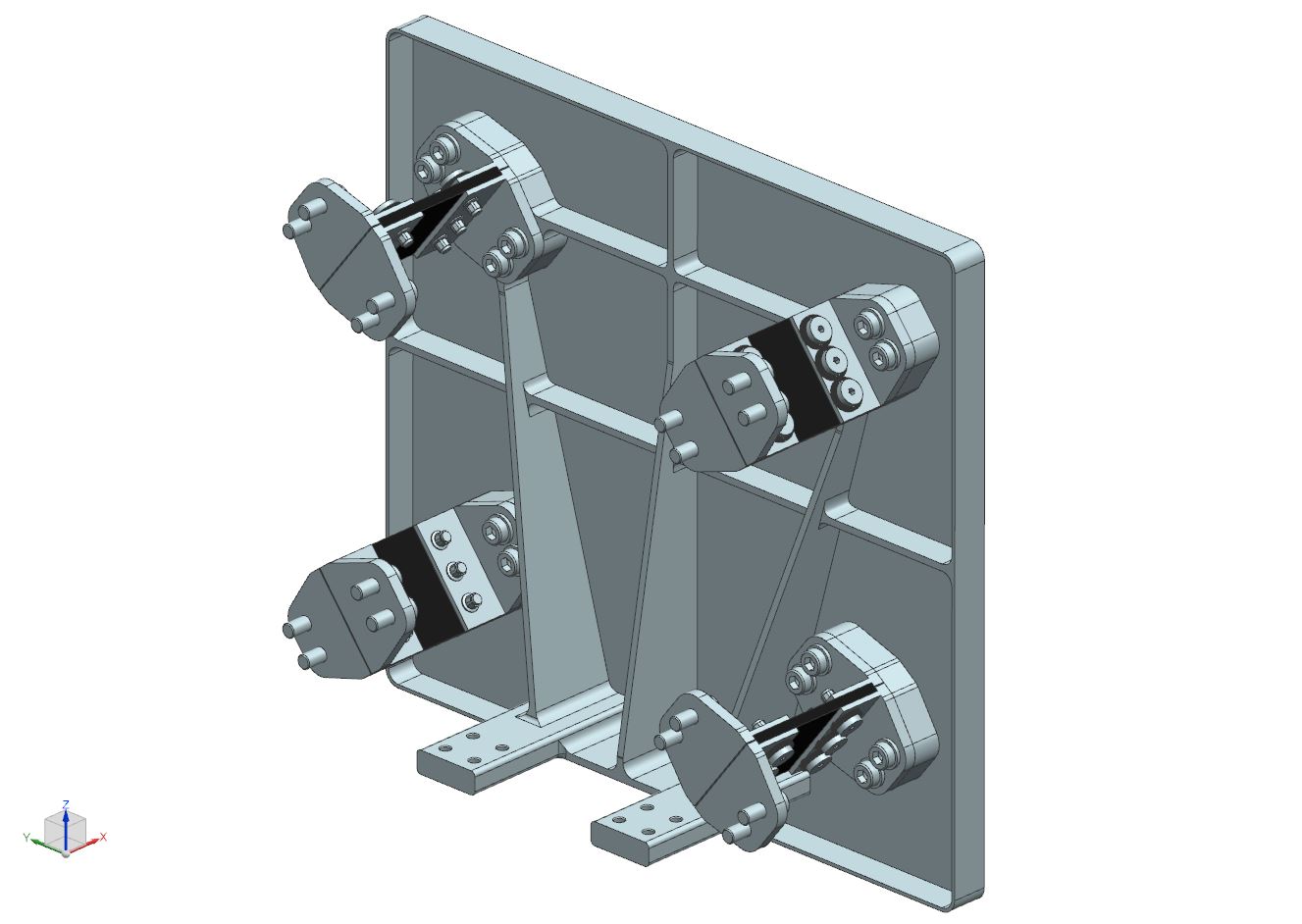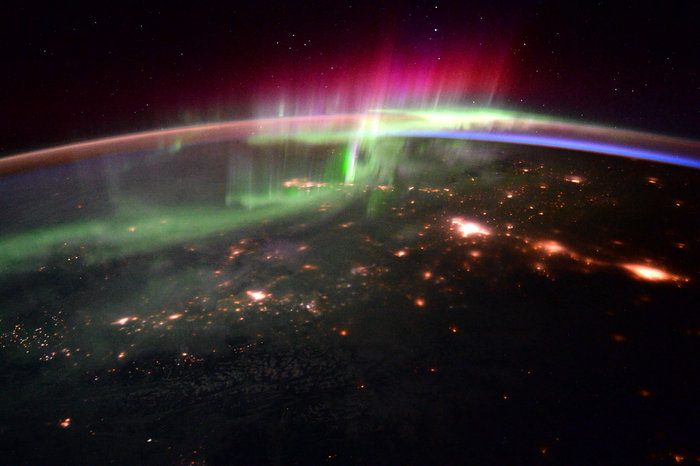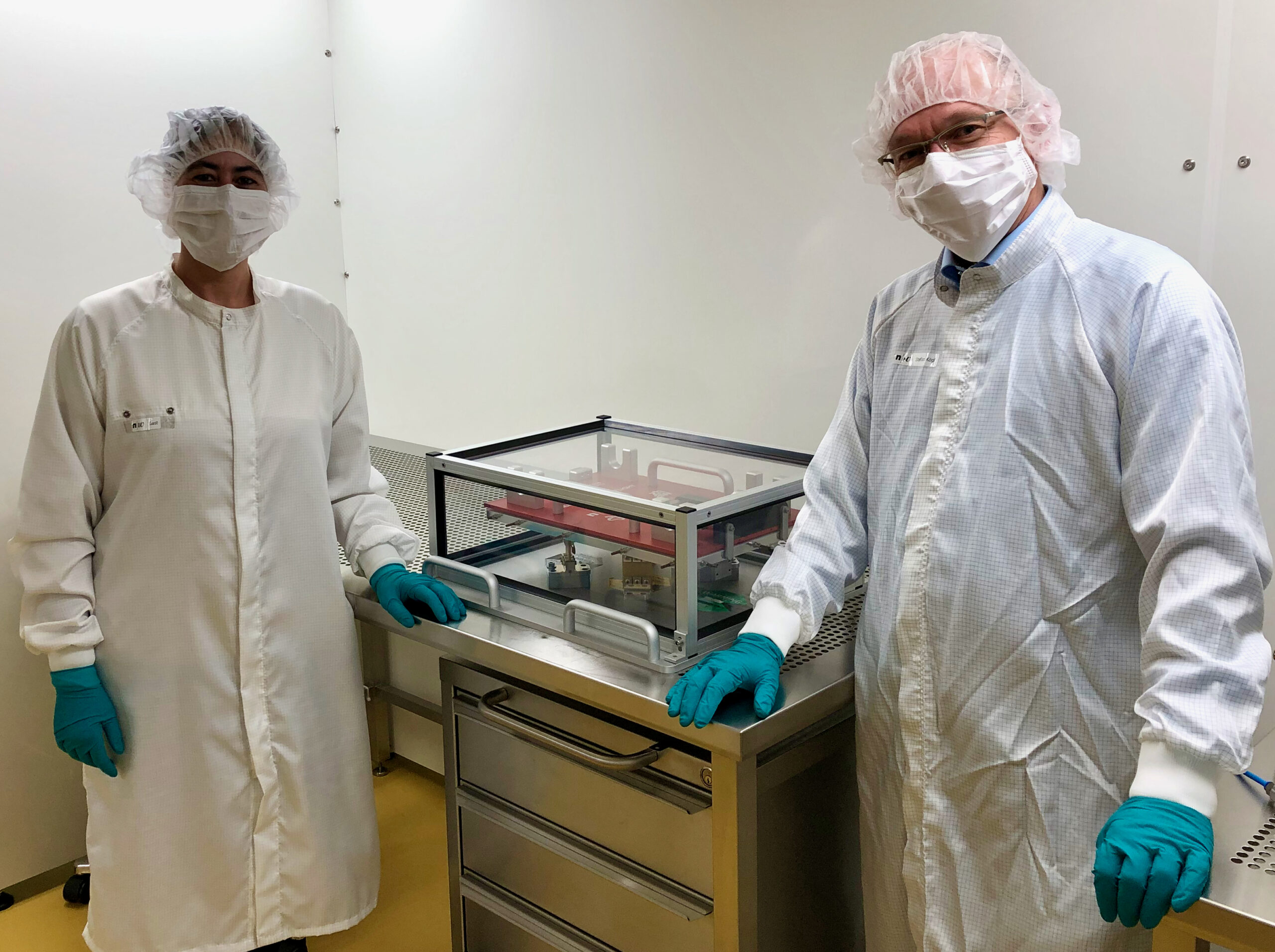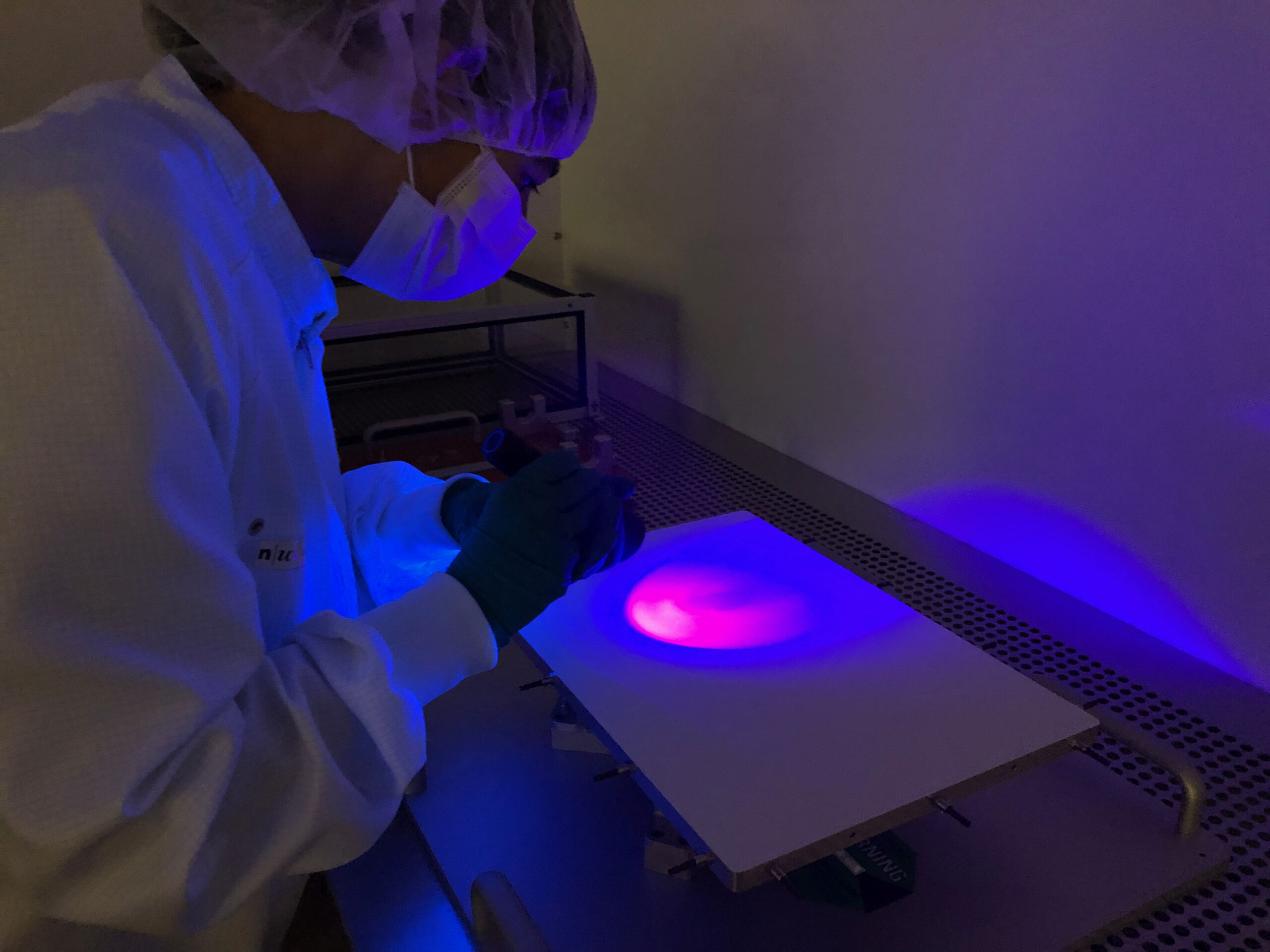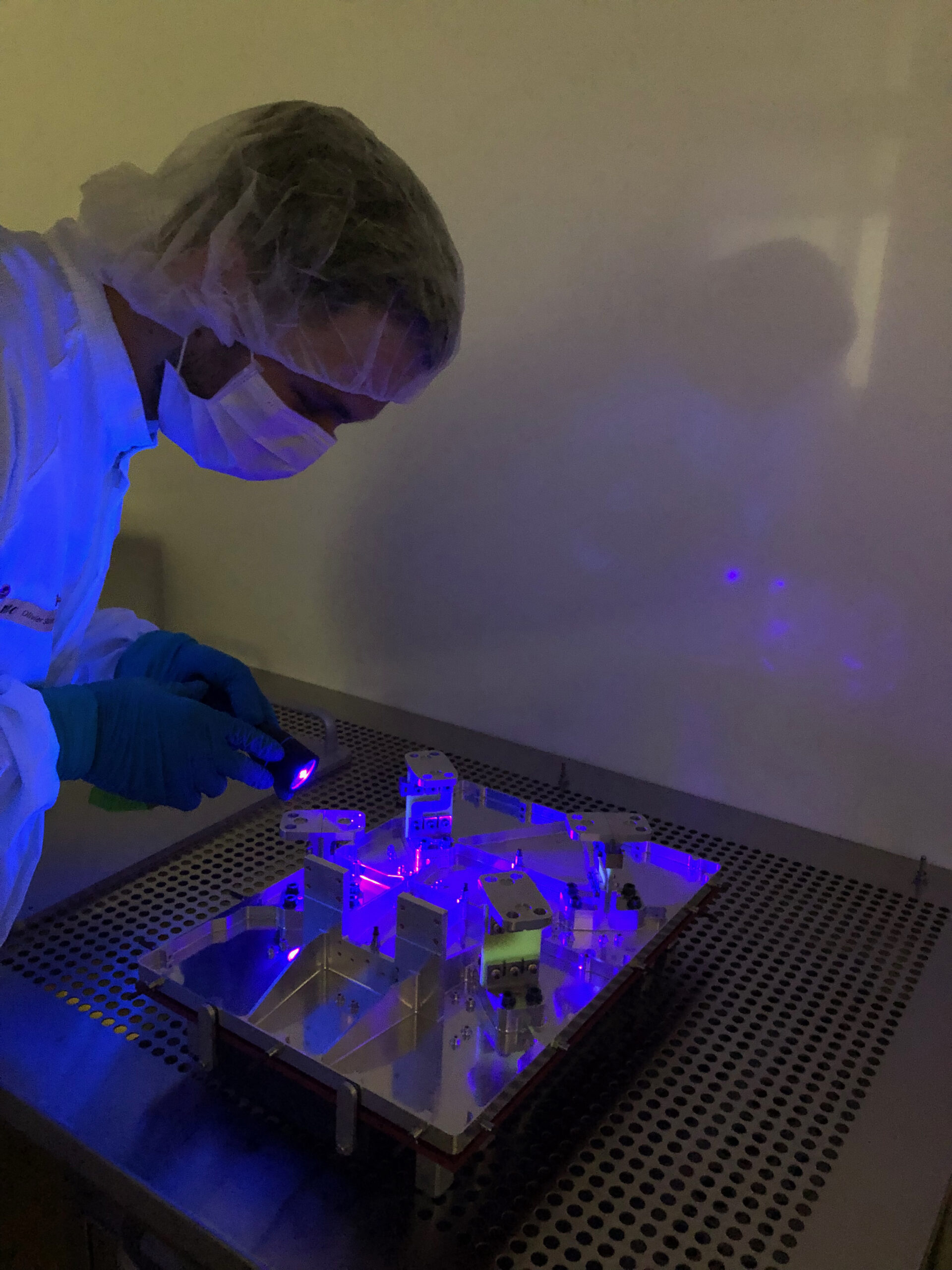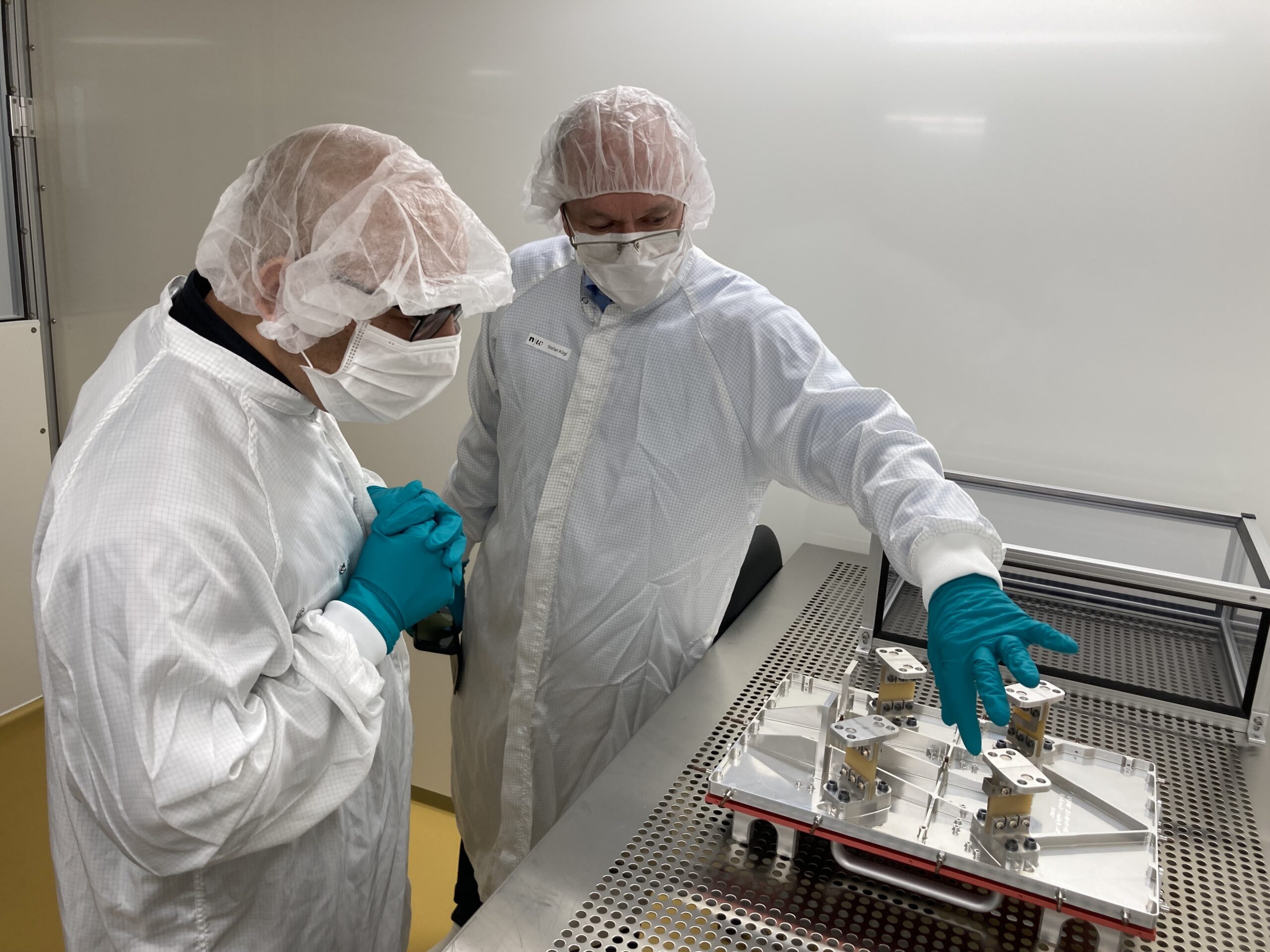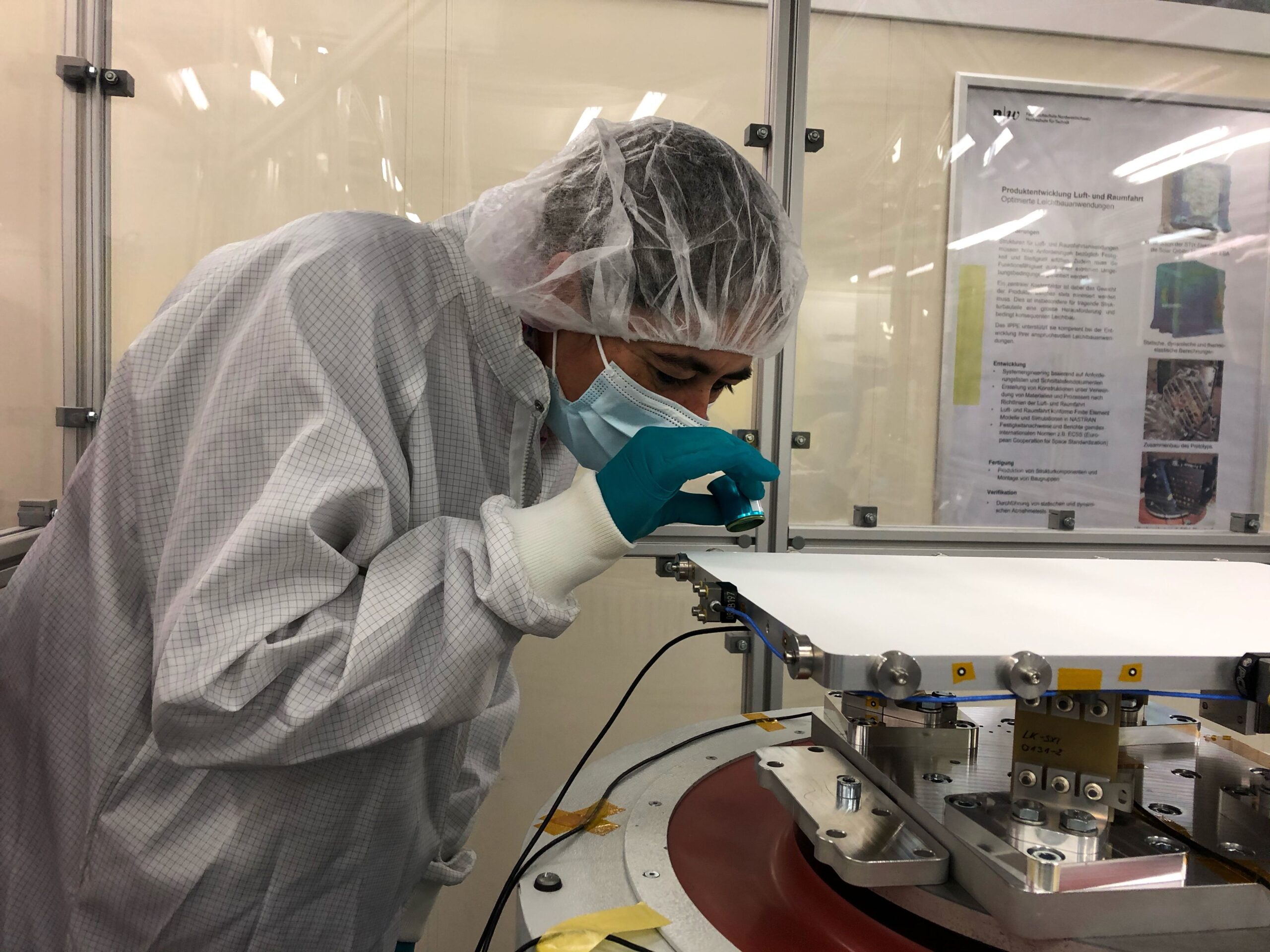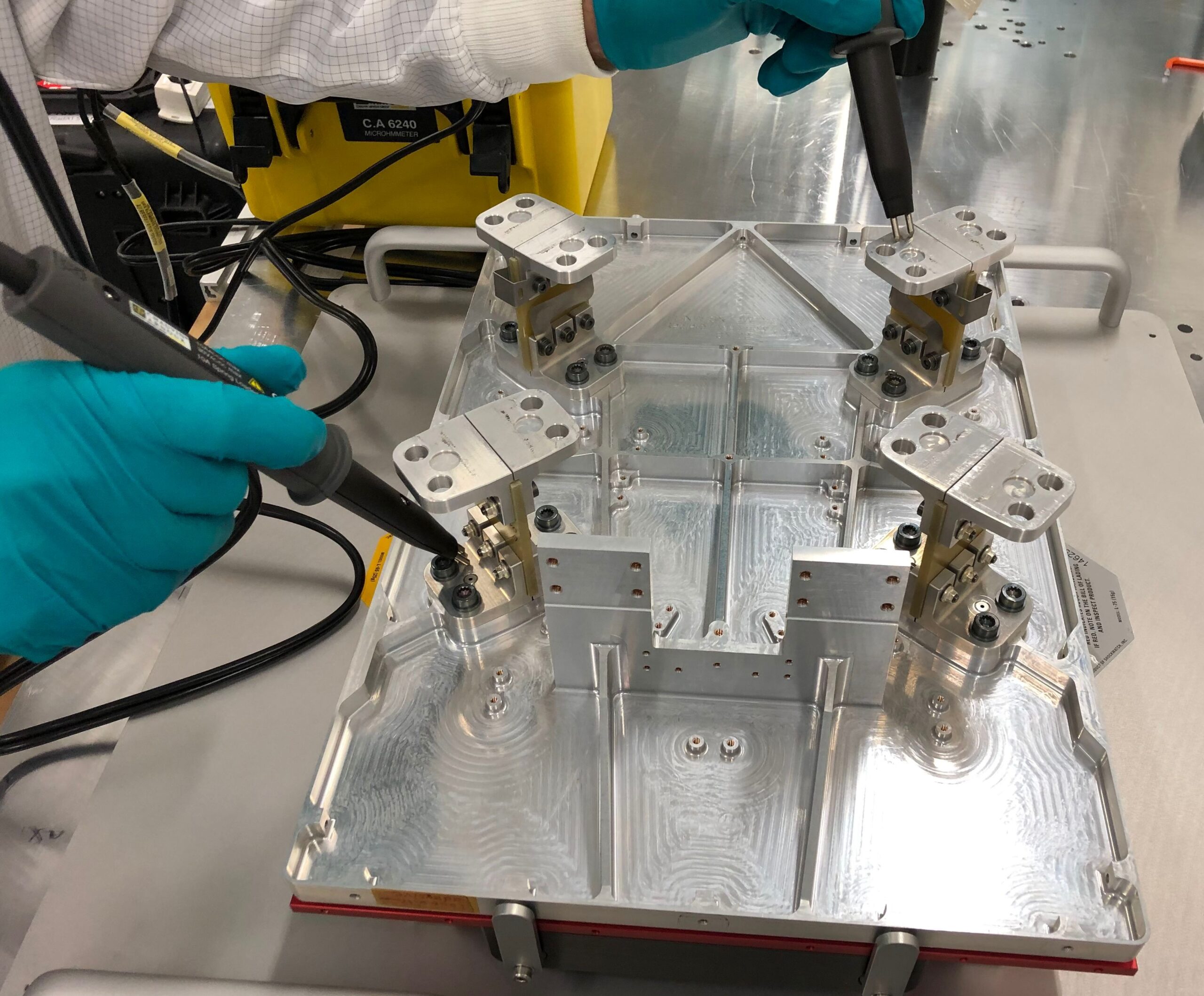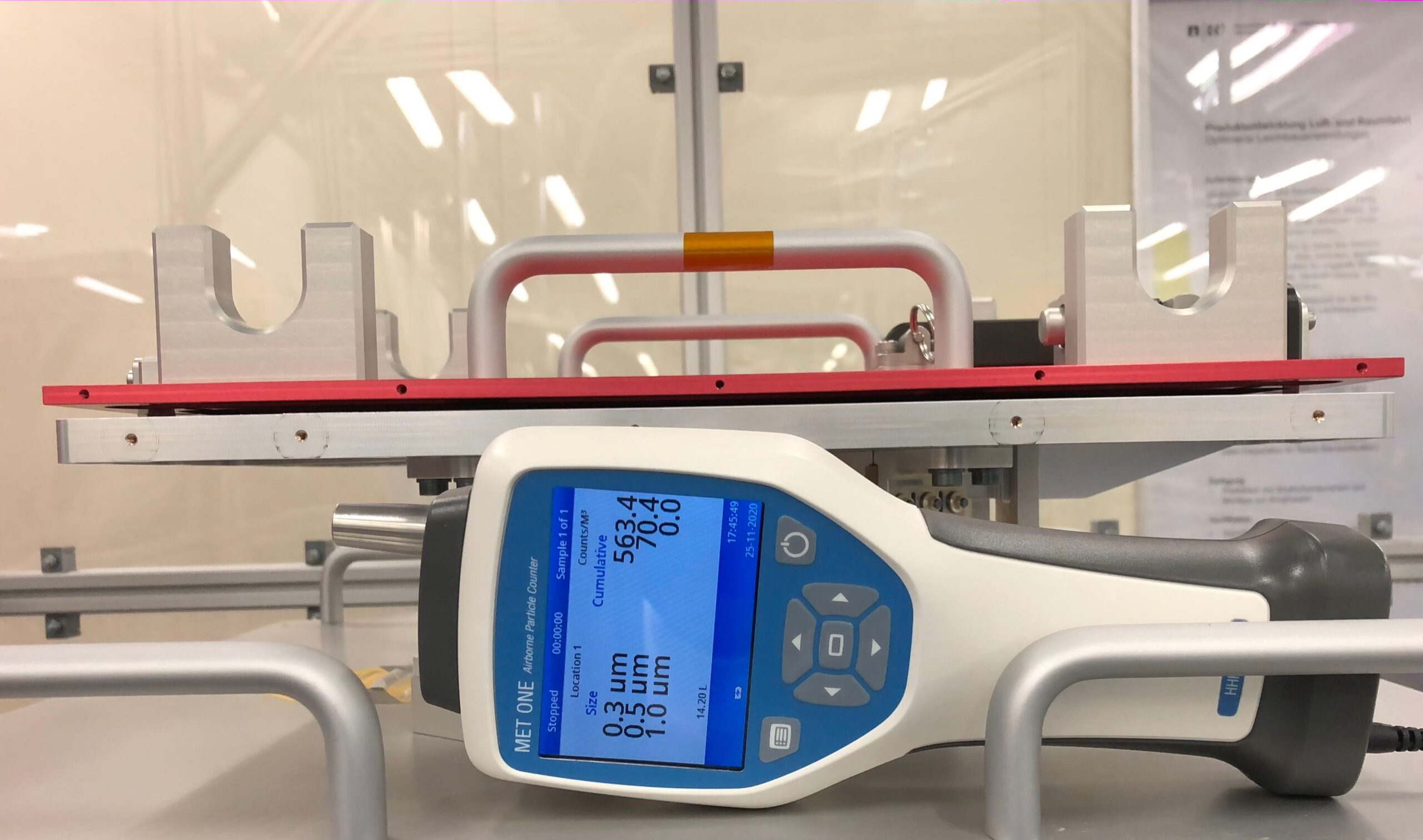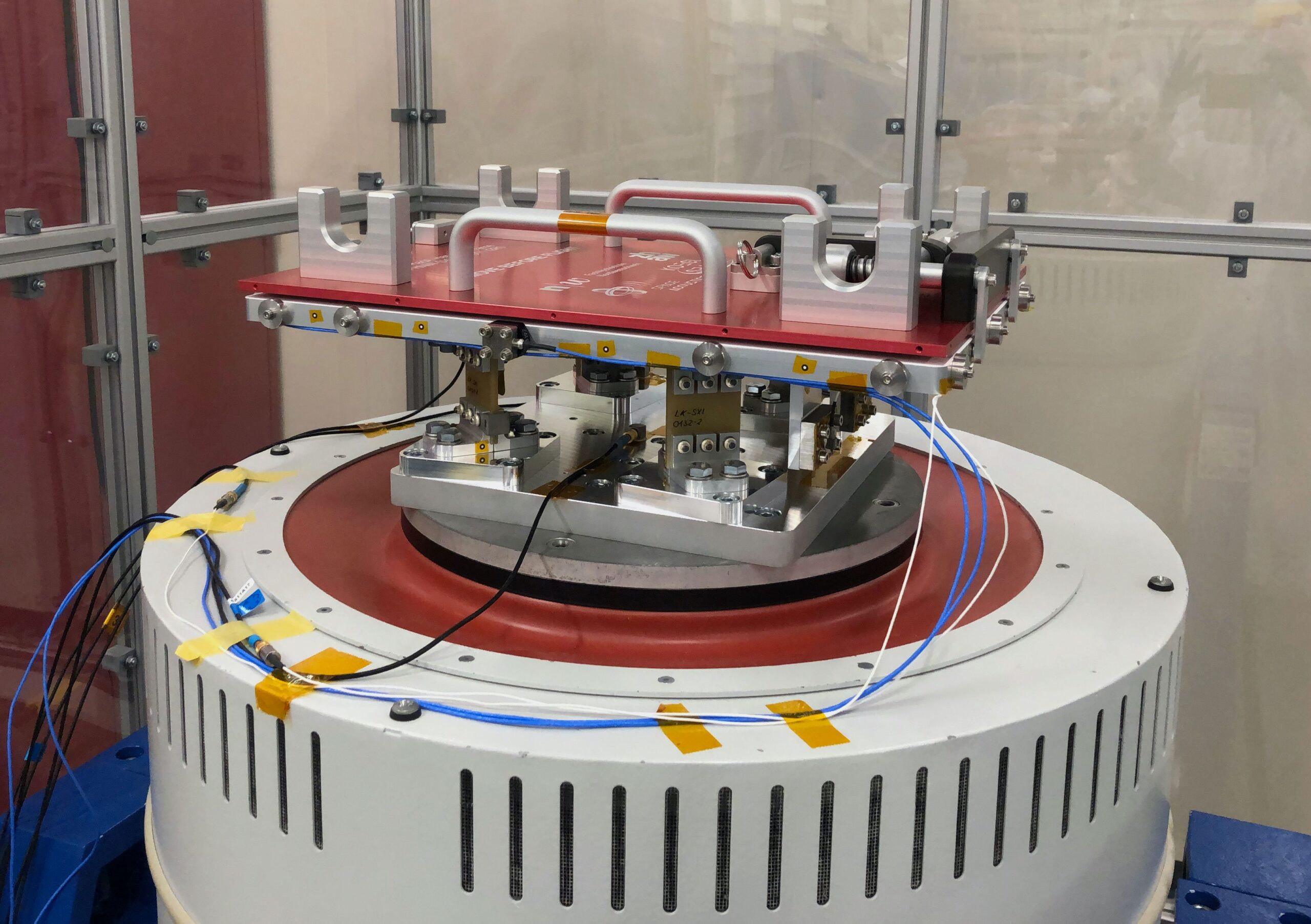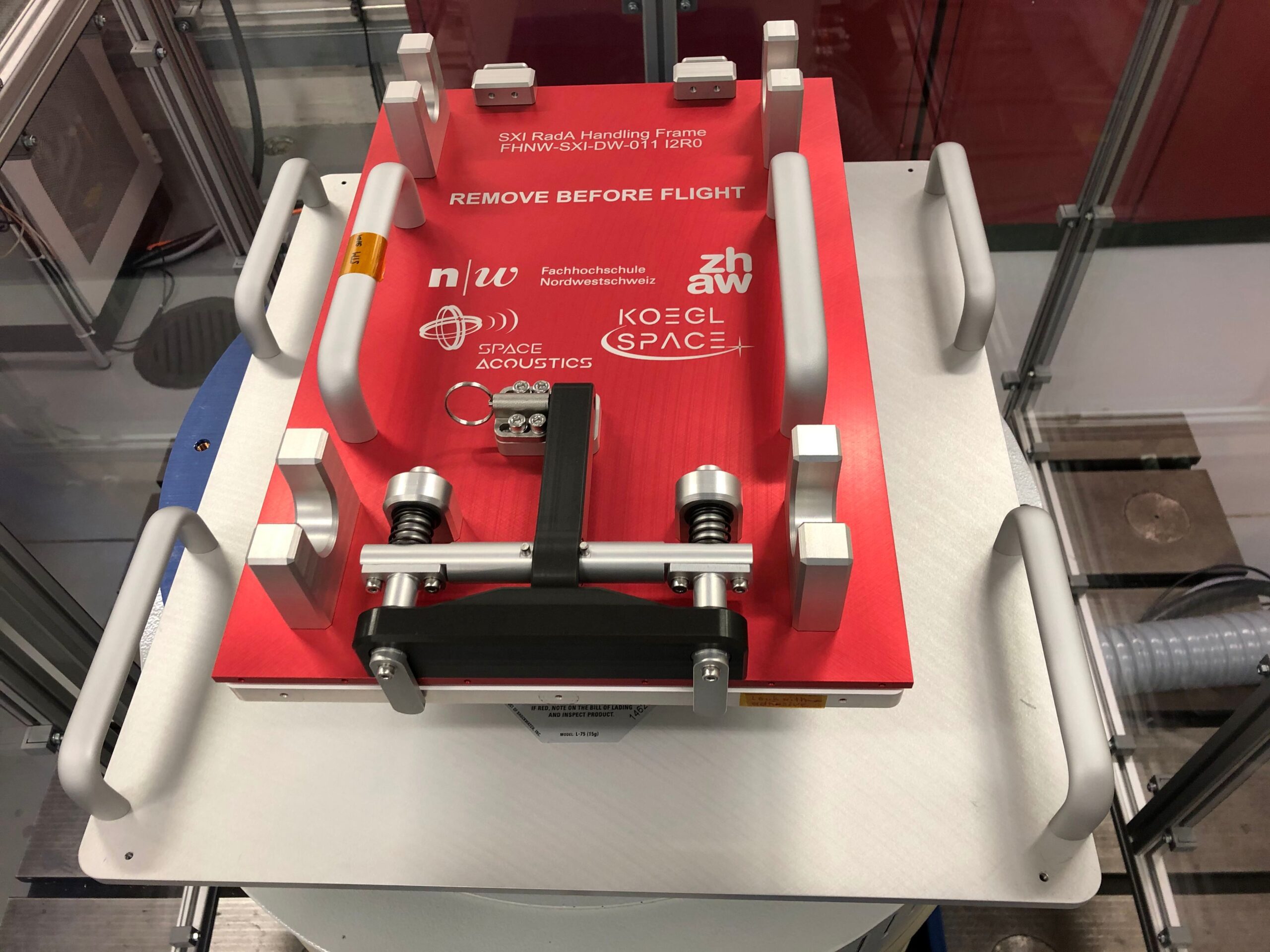SMILE SXI
Soft X-ray Imager
SXI is the X-rax instrument on the Chinese-European Mission SMILE
(Solar wind Magnetosphere Ionosphere Link Explorer)
ROLE OF THE INSTITUTE FOR DATA SCIENCE
> Thermal design of SXI
> Imaging software
> Data analysis and interpretation
Project lead at I4Ds: Säm Krucker
Partners: FHNW IPP, ZHAW, University of Leicester, Koegl Space, Space Acoustics
Funding: Swiss Prodex
Start: December 2018
Launch: 2025
Keywords: space sciences, heliophysics, space weather, Smile mission
SUMMARY
The space mission SMILE will orbit the Earth in an elliptical pathway from 5000 km above the Earth to one third of the distance to the moon. While previous studies used observations from within or around Earth’s magnetic field, SMILE will take images and movies from outside of Earth’s protective magnetic shield. We will see the region where the solar wind slams into the Earth’s magnetic field. With these global and time dependent images, SMILE will revolutionize our understanding of the influences of space weather on our planet.
PEOPLE @FHNW WHO WORK ON SXI
PEOPLE @FHNW WHO WORKED ON SXI BEFORE
- Anya Liebendörfer, until 2021
- Manela Dreier, until 2021
- Nico Gradwohl, until 2020
- Matthias Fankhauser, until 2019
OPEN RESOURCES AND RESULTS
VISUALS AND AUDIO
The SMILE spacecraft will carry two imaging instruments – the wide field of view soft X-ray imager (SXI) and an auroral ultraviolet imager (UVI) – and an in situ measurement package that will work in conjunction with the imagers to explore the properties of the solar wind. Image credit: CAS/ESA
The Soft X-ray Imager SXI is one of four instuments onboard the SMILE spacecraft. It is a wide-field lobster-eye telescope with two X-ray-sensitive CCD detectors observing emissions from charged particles hitting the Earth’s magnetospheric boundaries. The FHNW astro-helio group will build the radiator for cooling the X-ray detectors and develop the imaging software. The four CAD-images above show the SXI instrument and the radiator. Image credit: U. Leicester, UK
Official video of the ESA-Chinese Academy of Sciences SMILE mission presented by NSSC. View video on YouTube
SMILE is a joint China – ESA mission to study the impact of the solar wind on the Earth’s magnetosphere. Artist’s conception by ESA/ATG medialab
Auroras (polar lights) are one example of solar wind impacting the Earth. However, charged particles from the sun may affect our planet in many ways. Technology in space, e.g. satellites, is particularly at risk. Image: ESA/NASA
AFTER THE DELIVERY
Our hardware was delivered to ESA at the end of 2020, but that’s not the end of the story. Following some reports and images of the subsequent tests, some at FHNW and others at premises of the ESA, the University of Leicester and in Shanghai.
Tests and images by Stefan Koegl, Koegl Space

December 7, 2023: Another door closed! … This time it is the door of the thermal vacuum chamber at FHNW with the VenSpec-H Filter Wheel Mechanism Breadboard inside.
After successful vibration tests in November, the thermal vacuum tests on the Filter Wheel Mechanism Breadboard have been started this week and are well on the way. Due to its high technical maturity also a lifetime test will be carried out after the thermal vacuum testing.
On the picture: the Filter Wheel Mechanism Breadboard in the thermal chamber at FHNW. It was developed by HSLU, FHNW and KOEGL Space which are members of the Swiss Consortium for VenSpec-H Instrument on ESA’s EnVision mission.

November 27, 2023: Door closed! … the door of the Thermal Vaccum Chamber at RAL was closed last Friday with the flight model of the SMILE SXI instrument inside. After successful vibration tests in October, the Thermal Vacuum test campaign of the SMILE SXI flight model has started this week, conducted by the instrument lead University of Leicester (UK) supported by Space Acoustics from the Swiss team in charge of the thermal engineering. On the picture in the front row: the cryogenic radiator developed by our Swiss team, comprising FHNW, ZHAW, Space Acoustics and KOEGL Space.
February 7, 2023: The flight model of our cryogenic radiator was accepted. At the University of Leicester, the radiator is now to be ttached to the soft X-ray imager SXI. SXI is the largest instrument that will be launched into space in 2025 on board the Chinese-European solar mission SMILE.
As every step in the development of such an instrument has to be meticulously documented, we have images of it in very good quality.

April 21, 2022: The SMILE payload module ready for the thermal- and the vibration tests, featuring the X-ray telescope SXS. The Swiss contribution is the radiator assembly behind the red protective device. See our logos from FHNW, ZHAW, Space Acoustics and KOEGL Space.
Video with the highlights from the test campaign of the Smile payload module at Airbus Madrid and the European Space Research and Technology Centre (ESTEC) in Noordwijk, October 2021 – March 2022. For some tests, the red protective device has been removed, and you can see the white radiator assemby produced at FHNW, for example at minute 3:08.
Video: ESA/Airbus/Lightcurve Films
November 26, 2020: After assembling the Structure and Thermal Model (STM) of our Radiator Assembly (RadA) in the summer, we were able to successfully carry out the shock and vibration test at the FHNW in October / November. Despite the corona-related restrictions, everything went very well.
After various other tests, the RadA STM was cleaned and packed.
Today we sent the associated data package with more than 30 documents for acceptance on 01.12.20 by the University of Leicester (UoL) and ESA / Prodex. Delivery is planned for 07.12.2020.
The MLI (Multi Layer Insulation) for the SXI STM, which is part of the SXI Thermal Subsystem under our technical leadership, was accepted on 10.11.20 and will be delivered to UoL in the next few days.
This will complete all hardware deliveries for the SMILE SXI STM under our responsibility. At the beginning of 2021, we expect to start Phase C Extension, which is currently under discussion with Prodex / SSO.


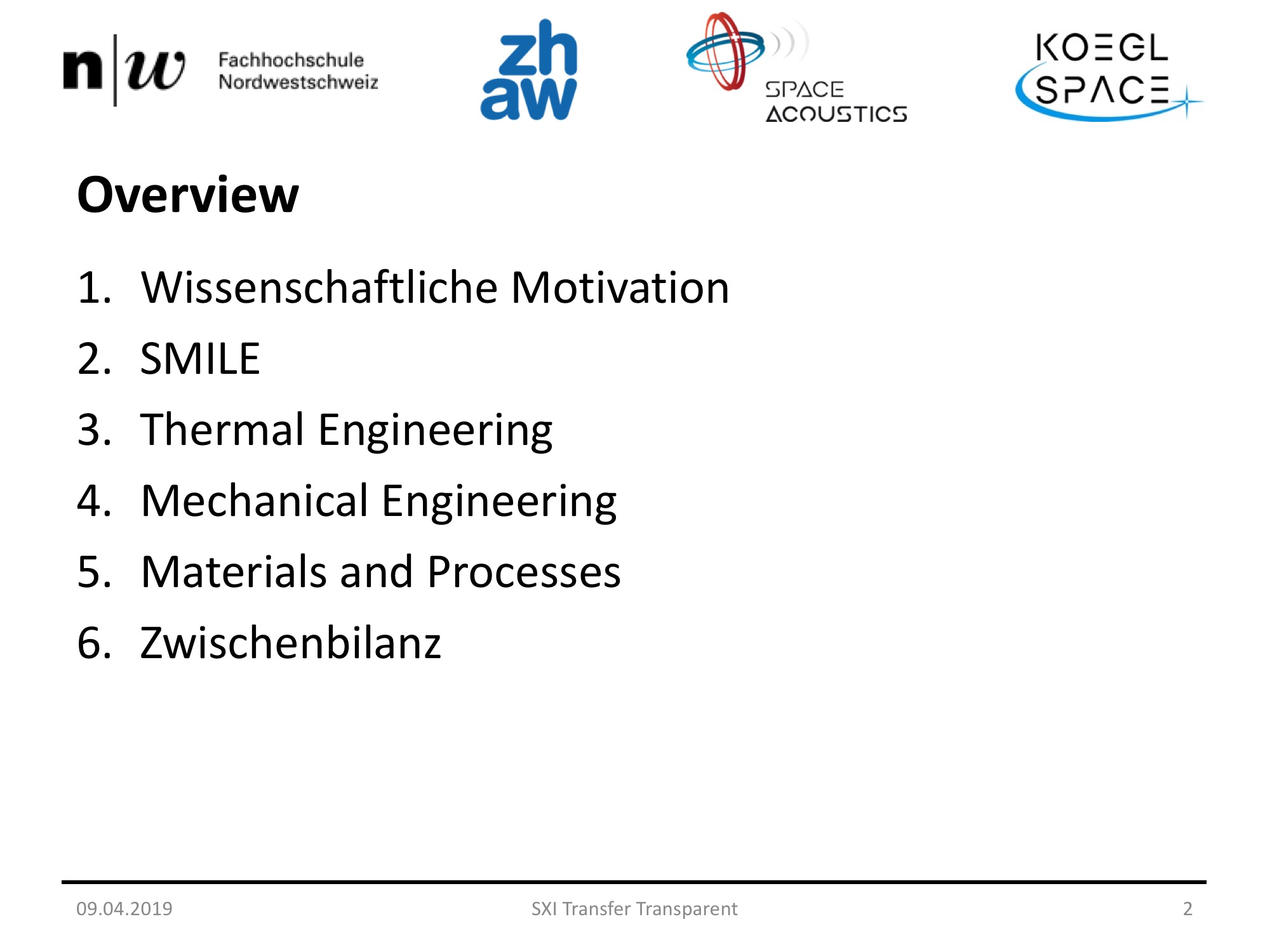
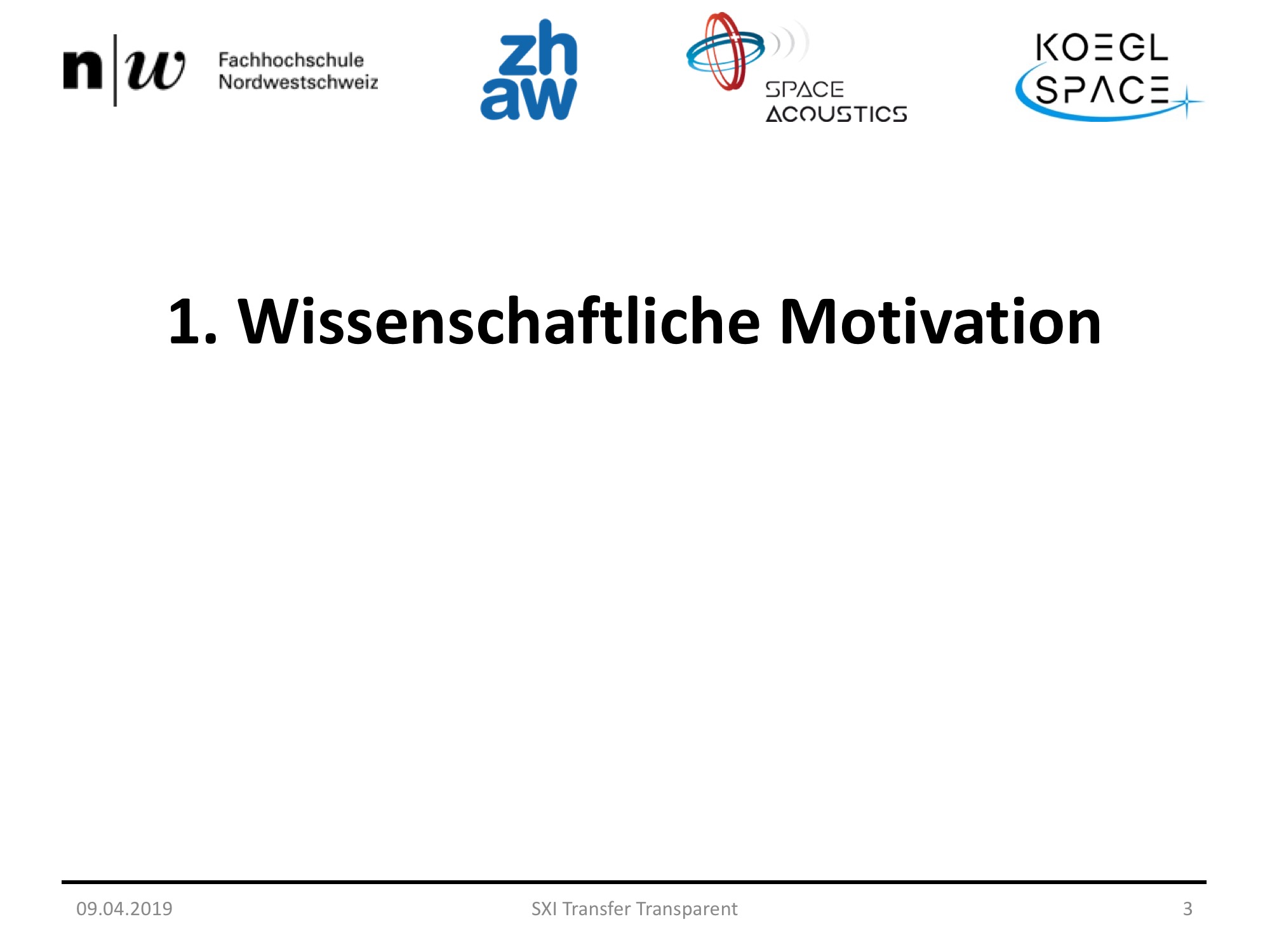

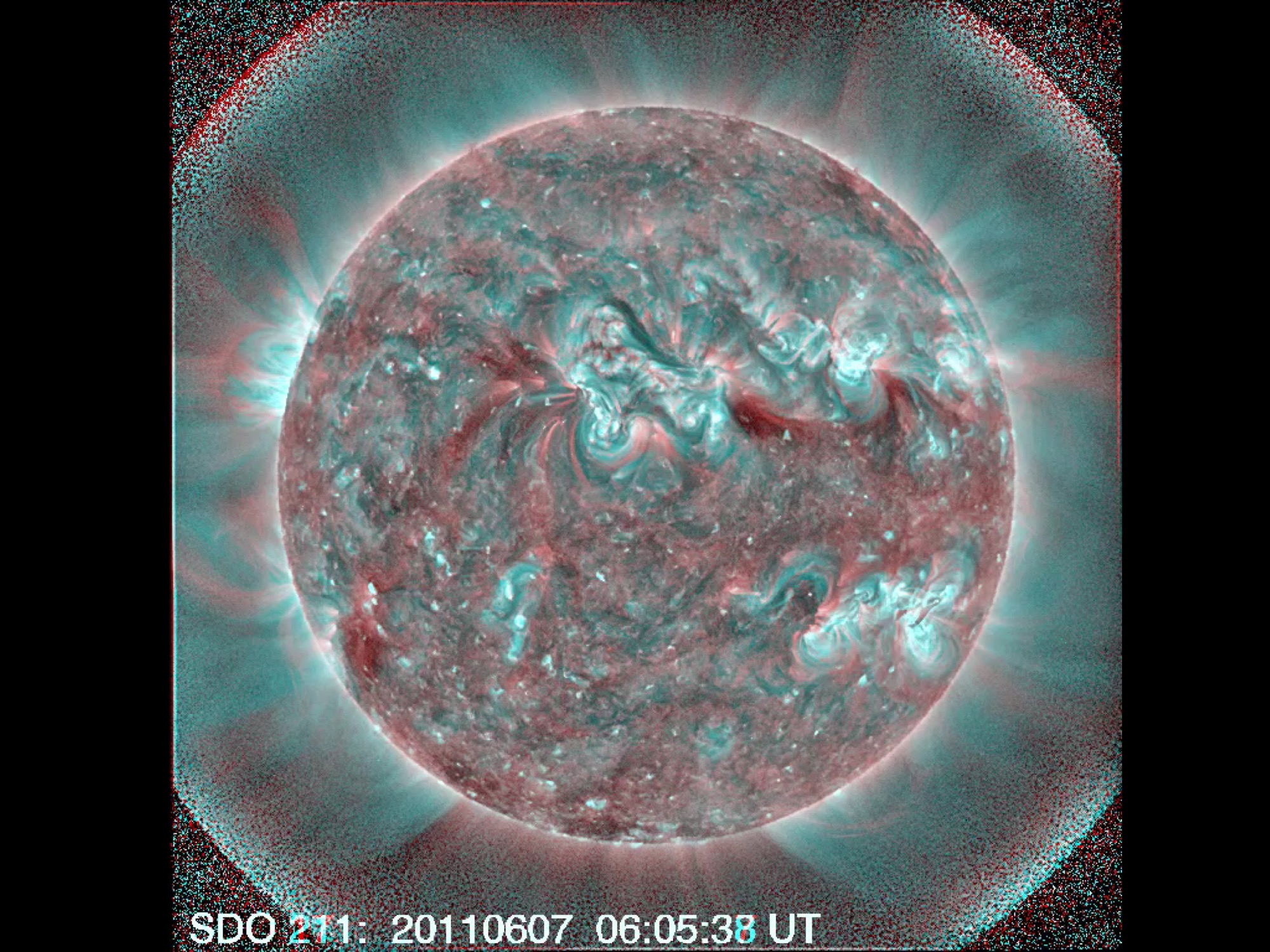
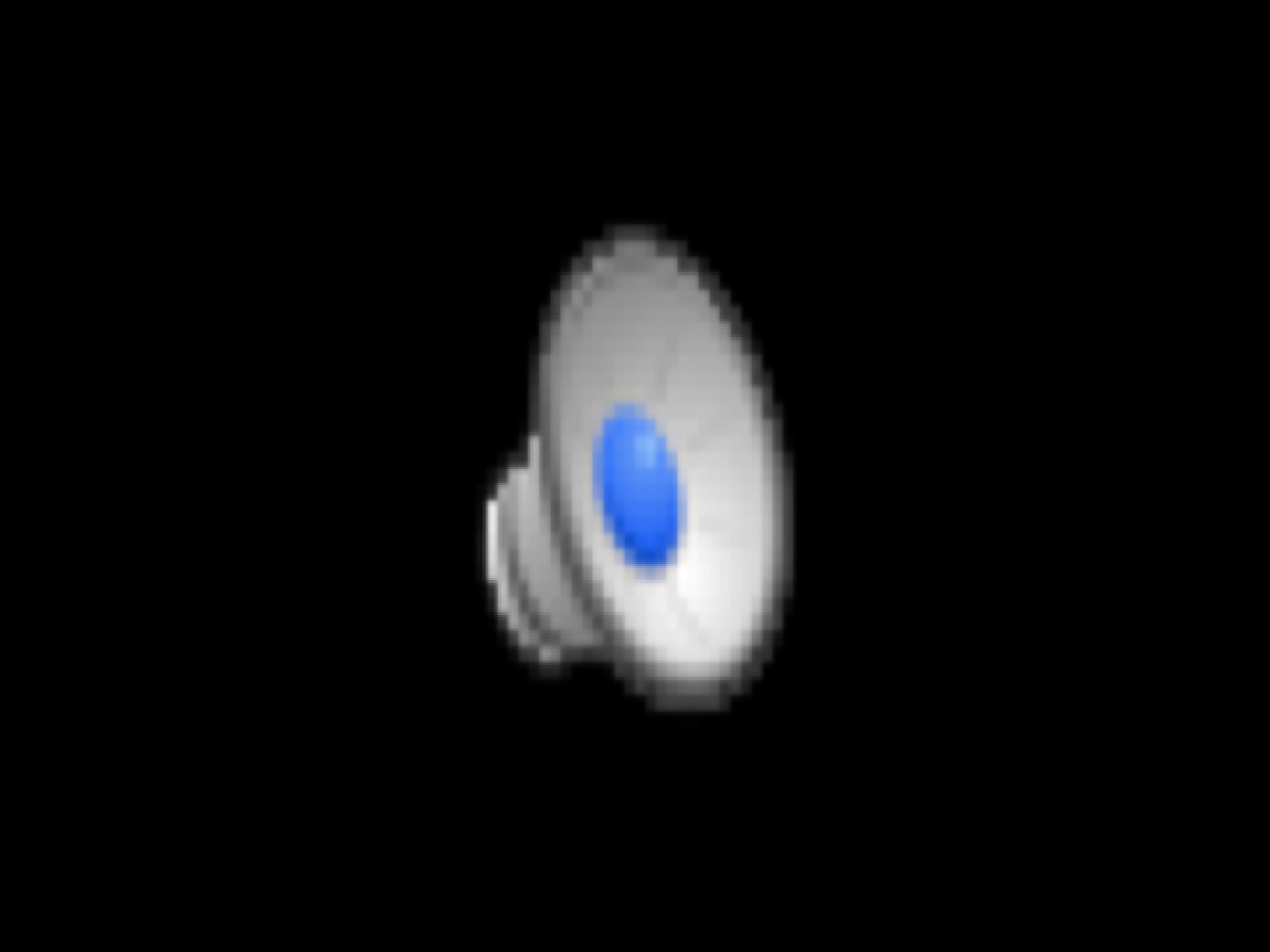

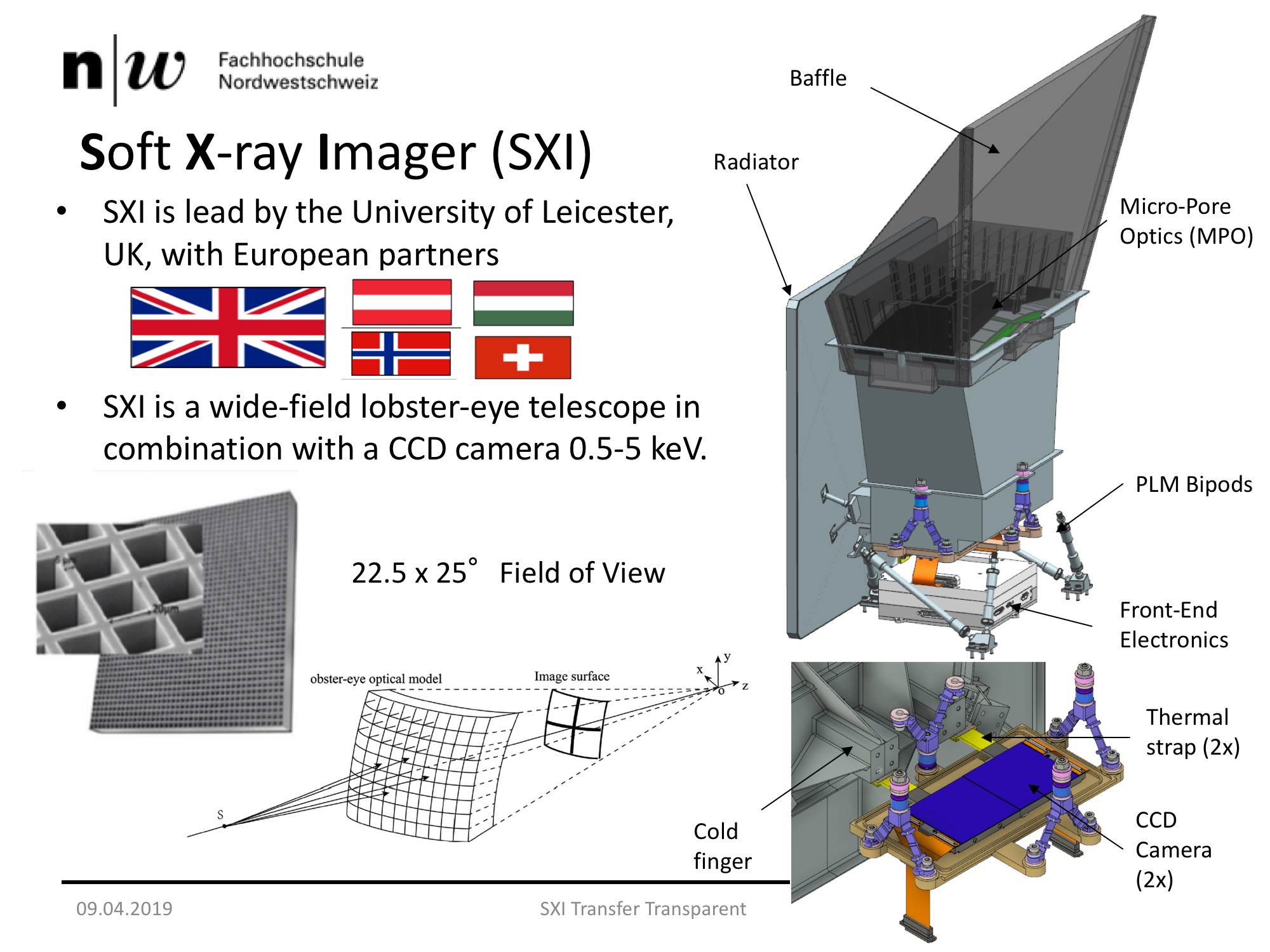
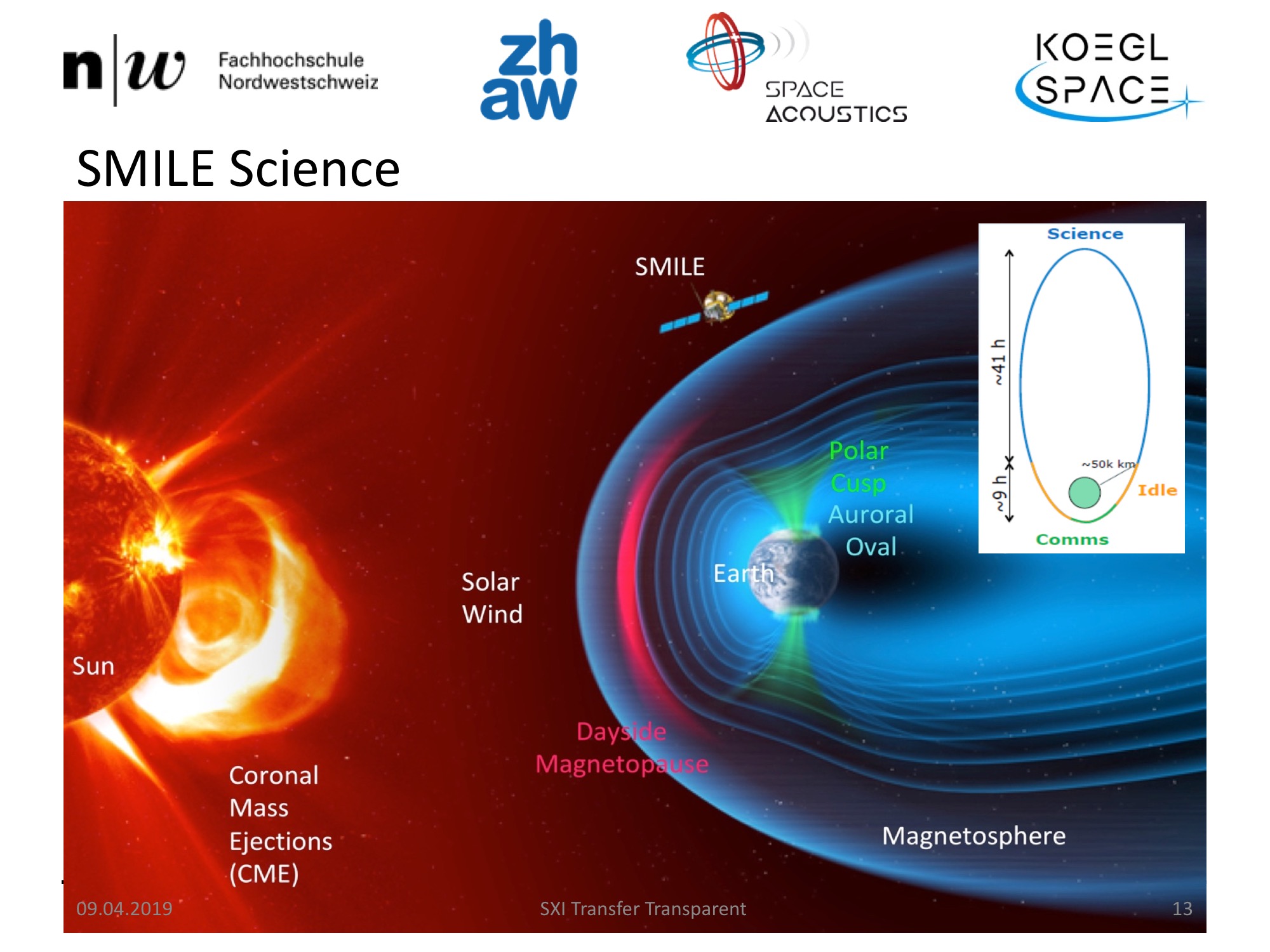

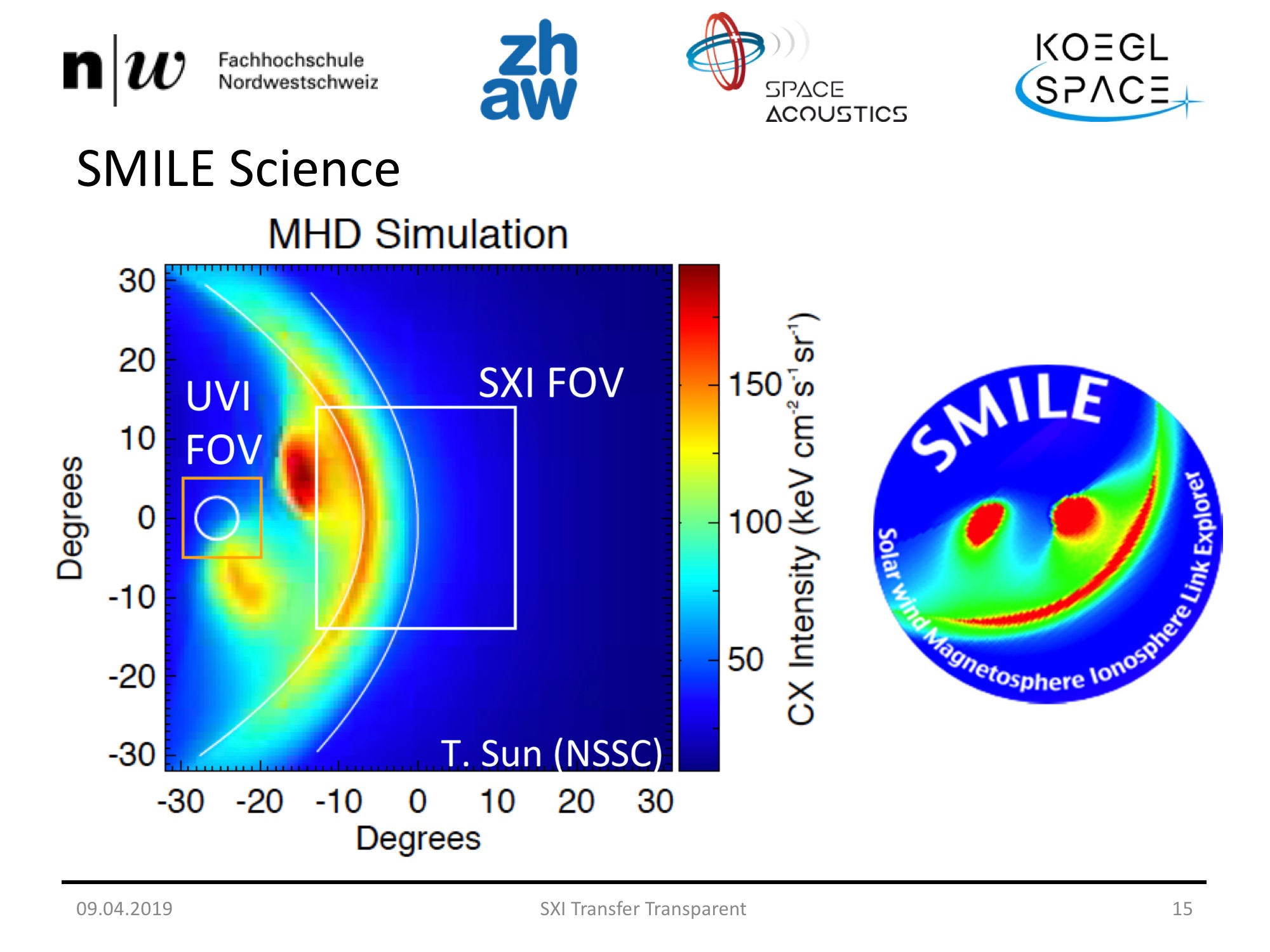
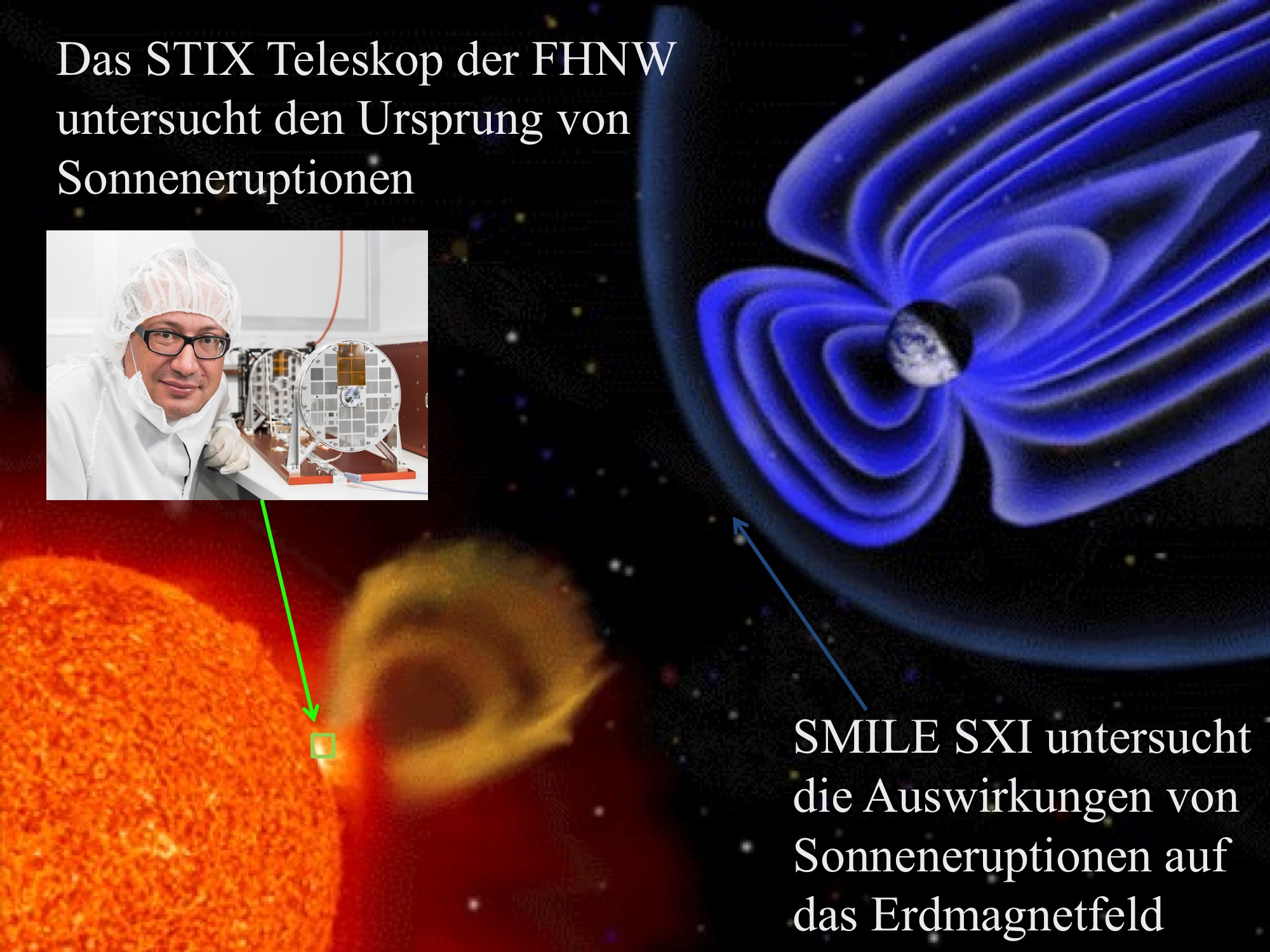
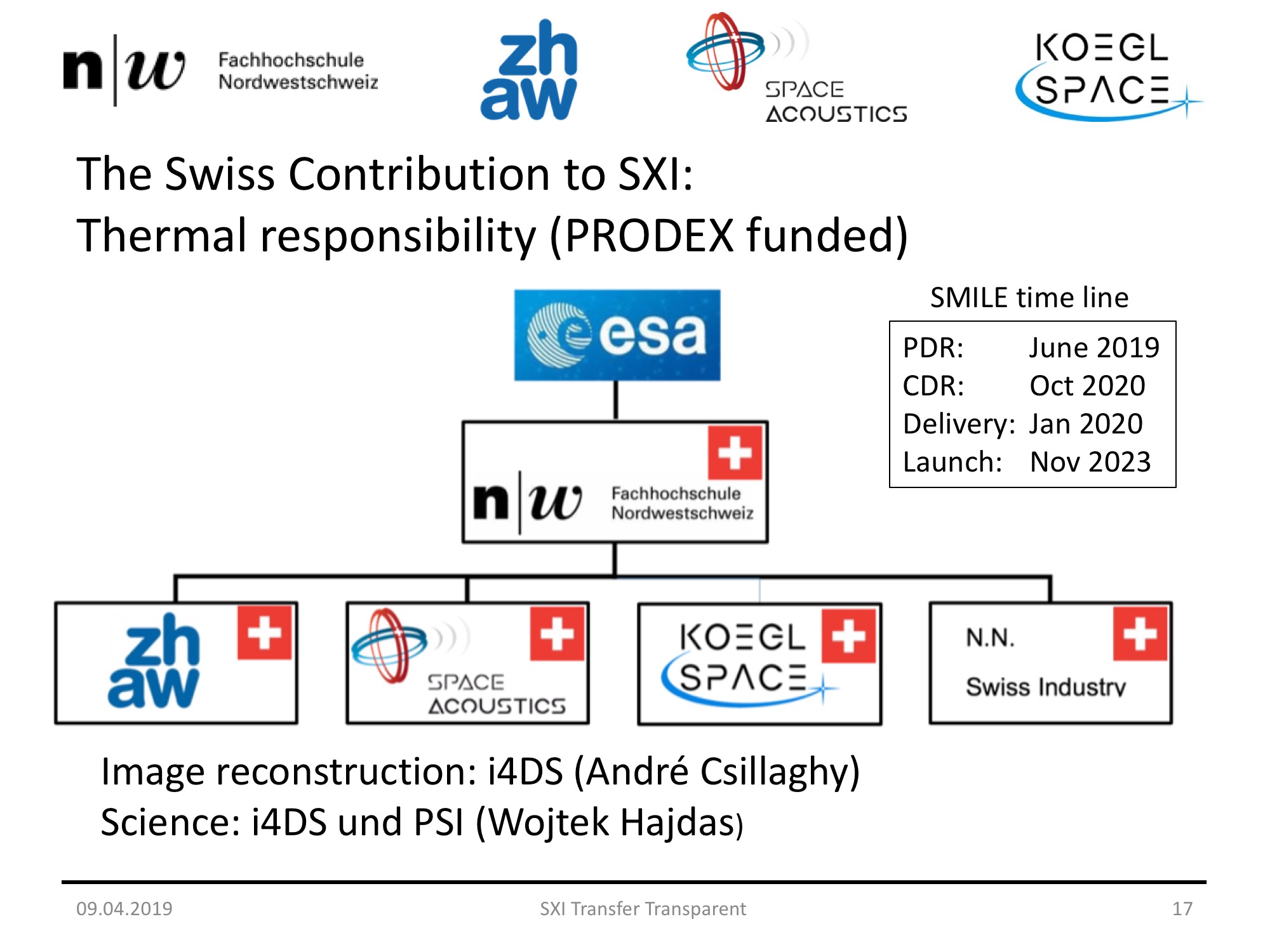
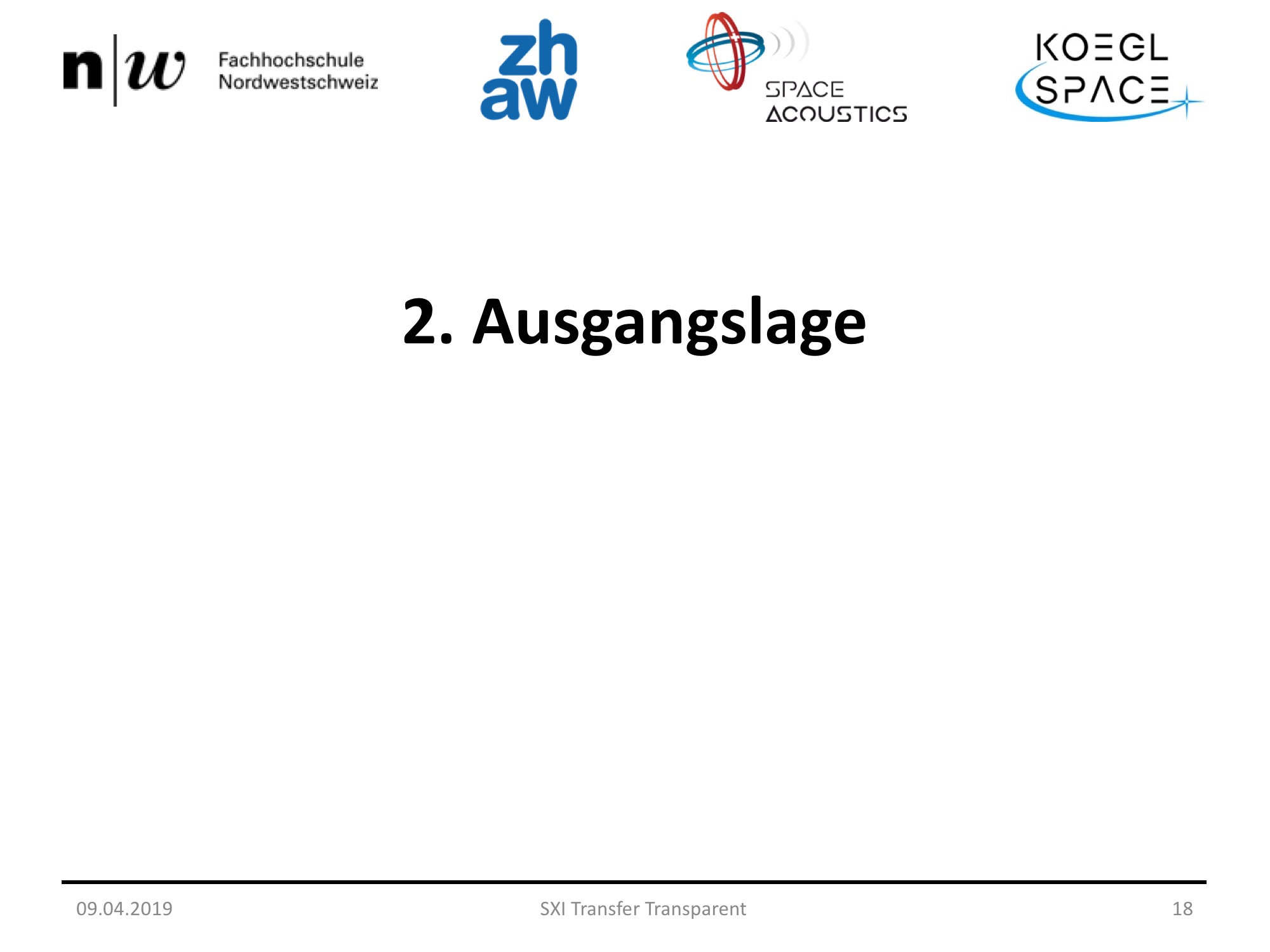
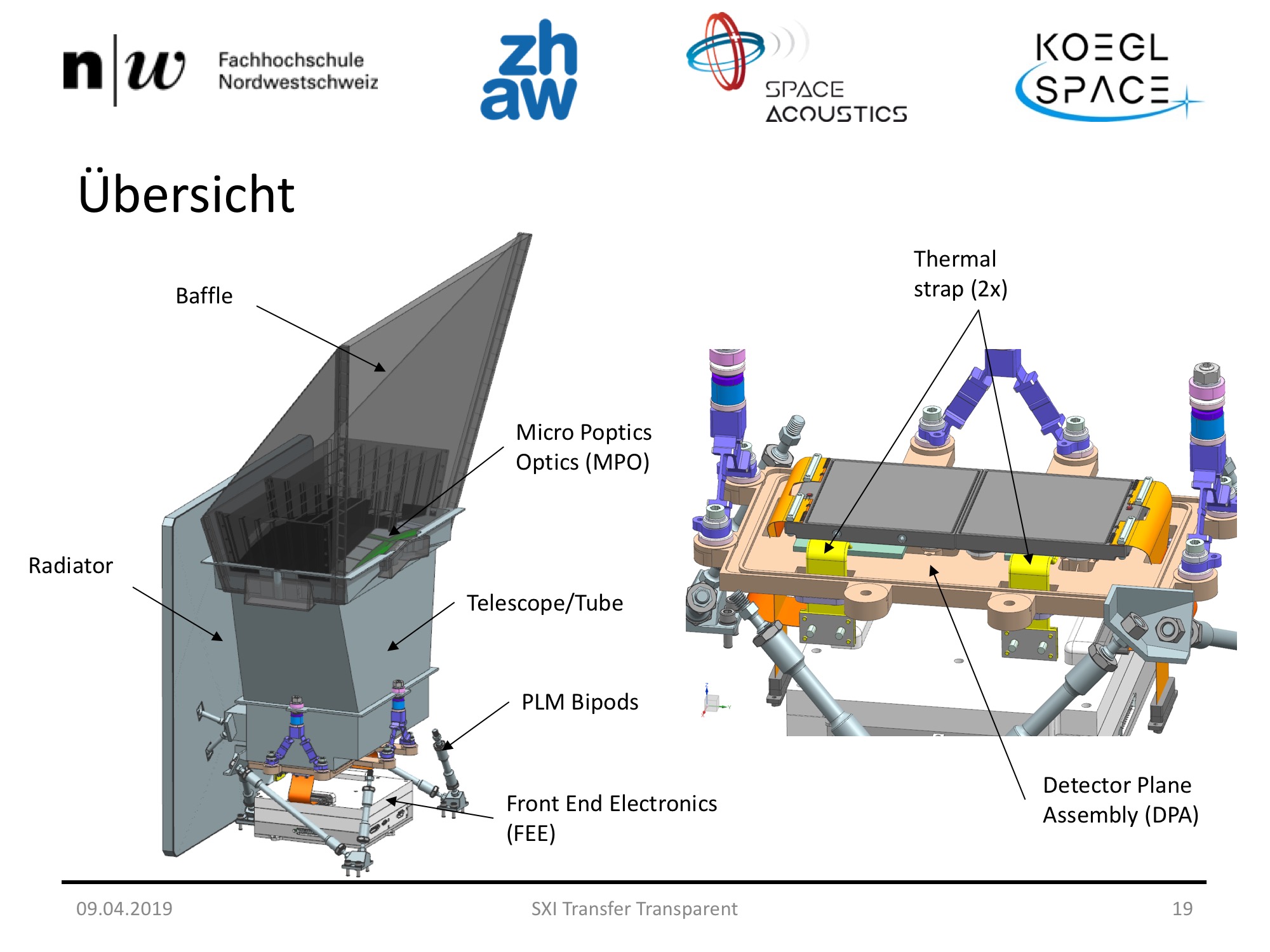
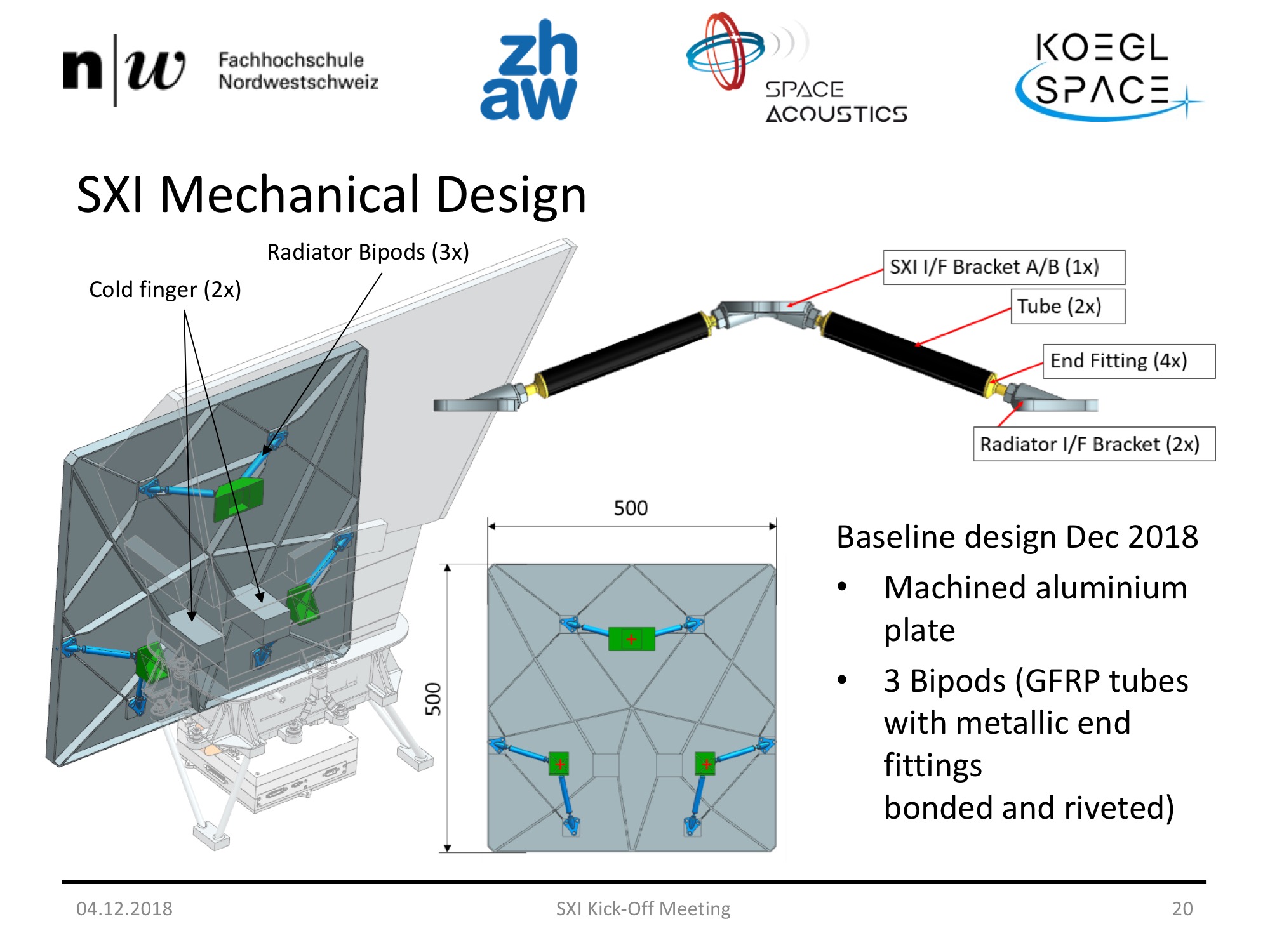 Initial Presentation SMILE SXI
Initial Presentation SMILE SXI